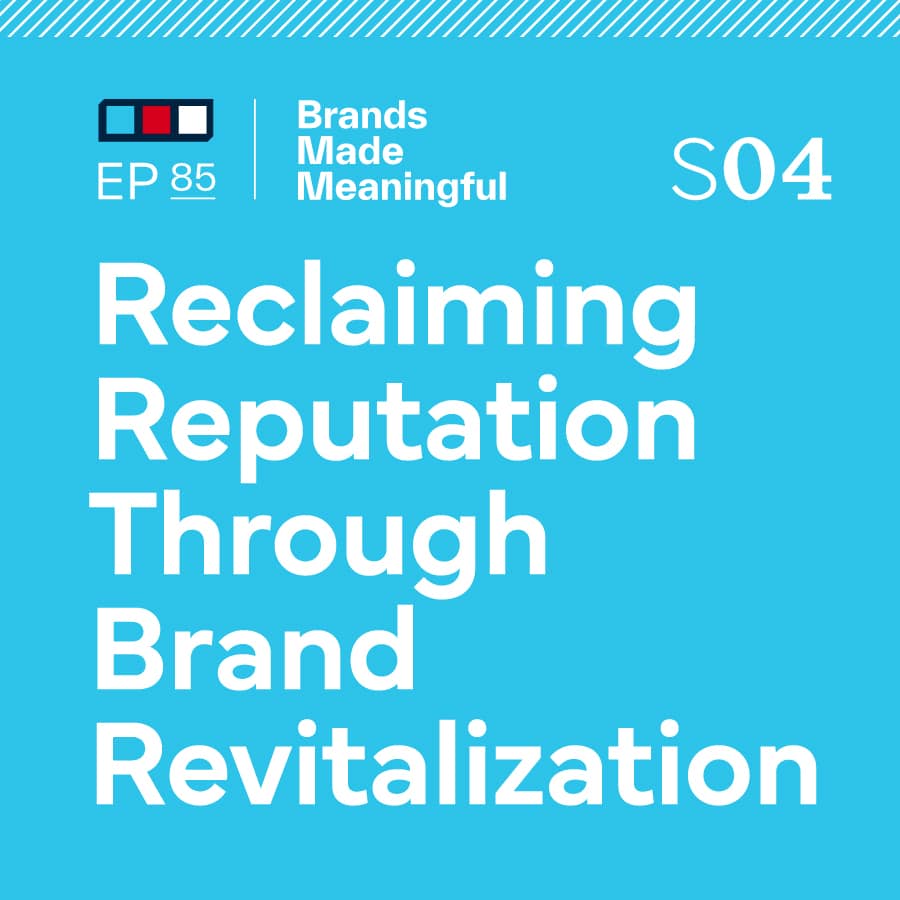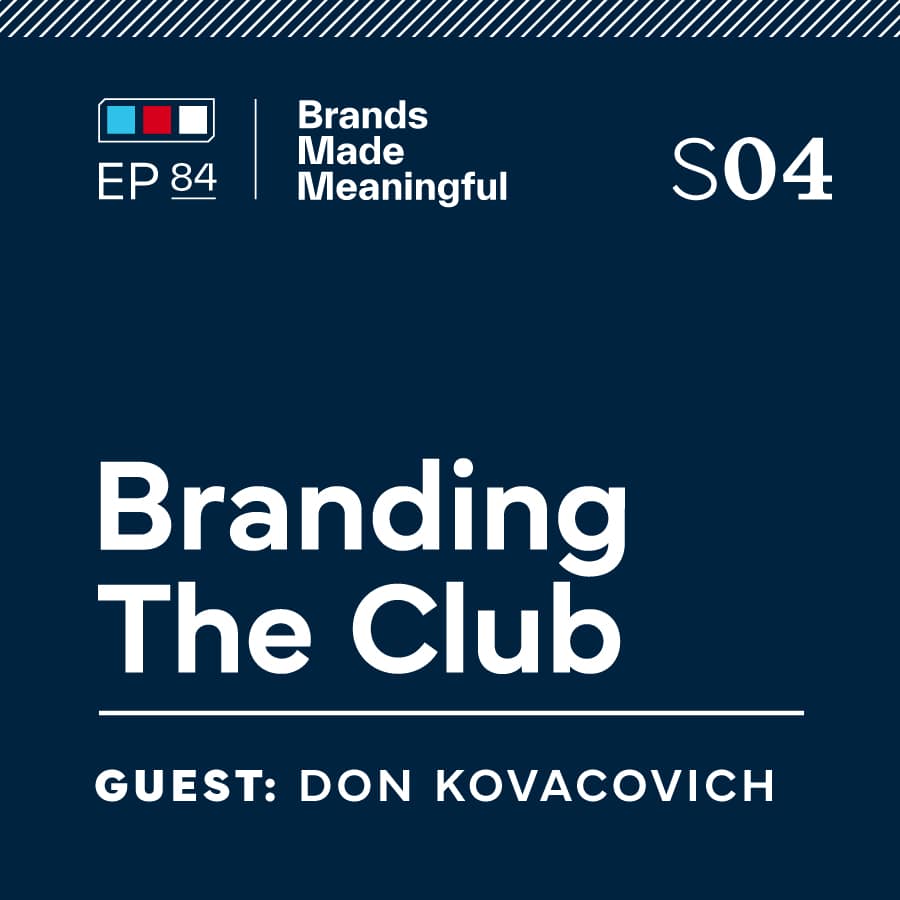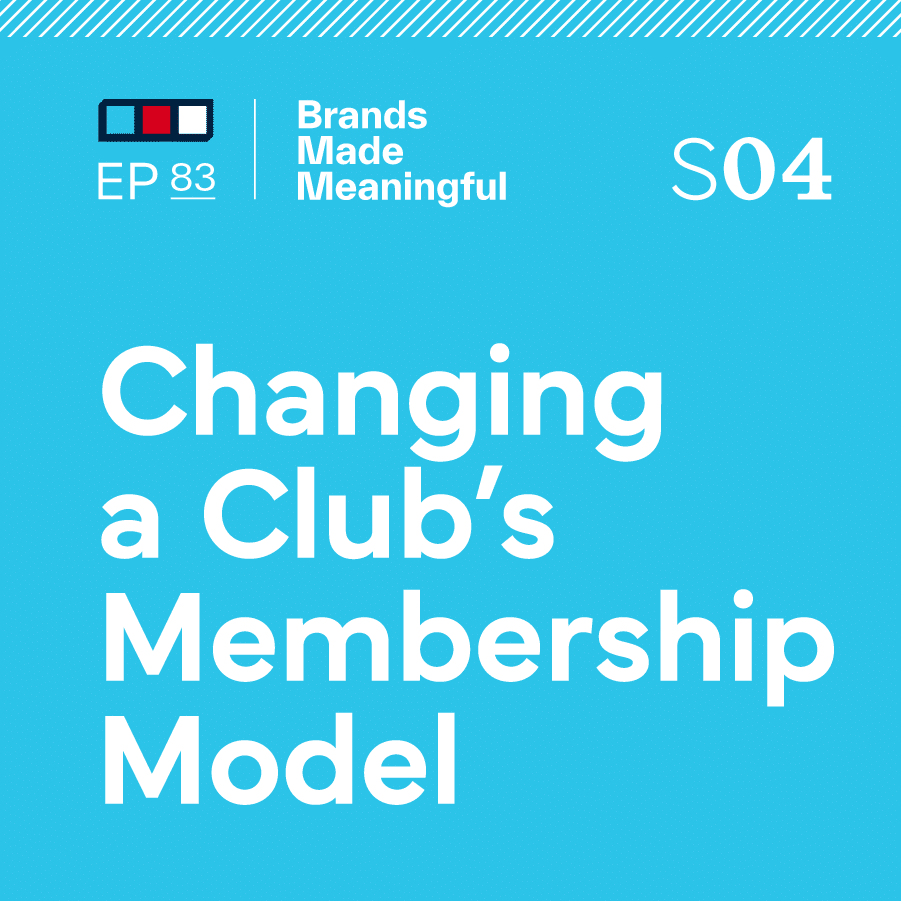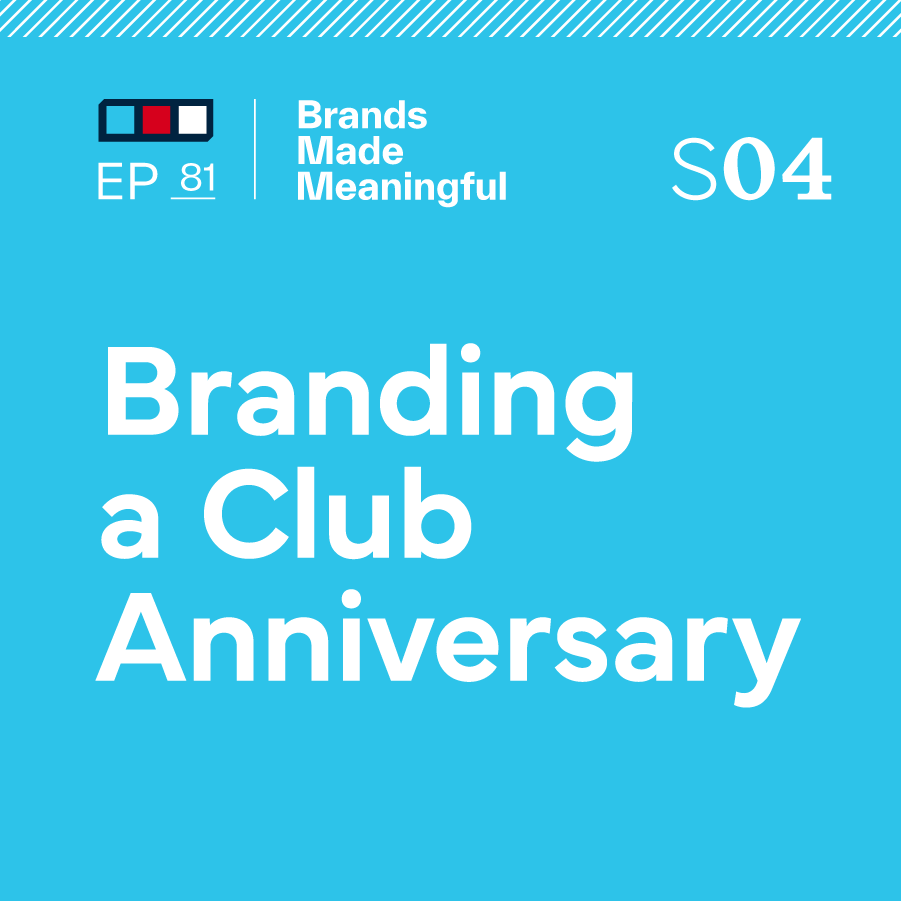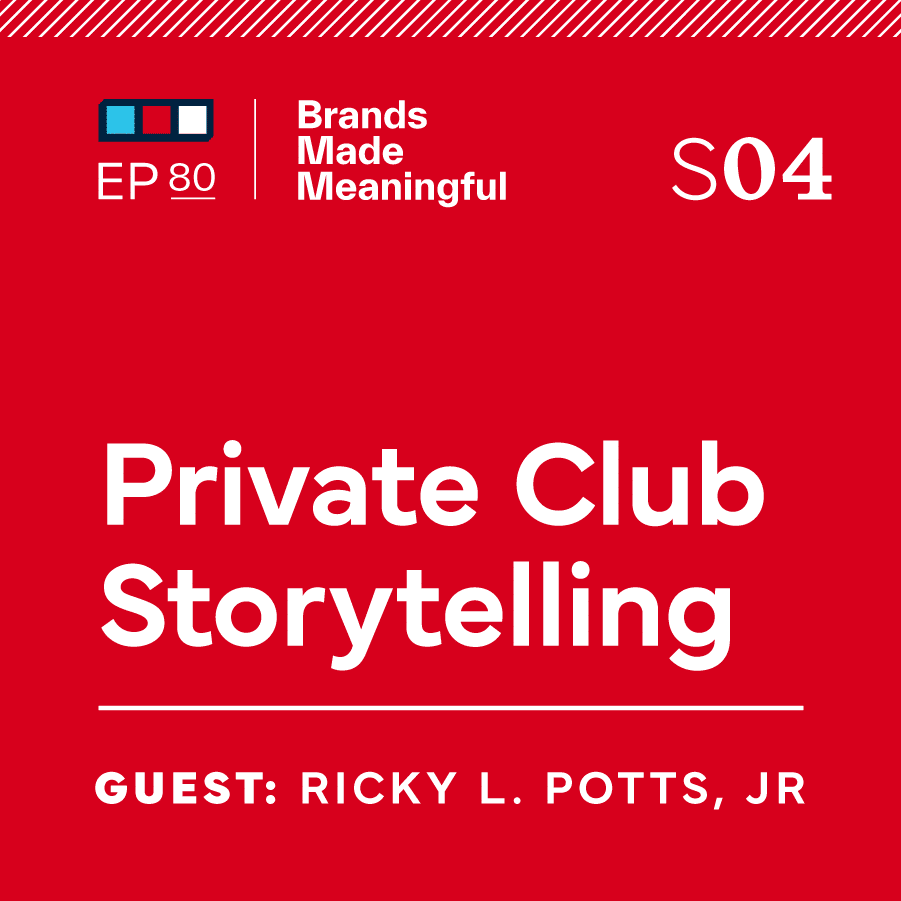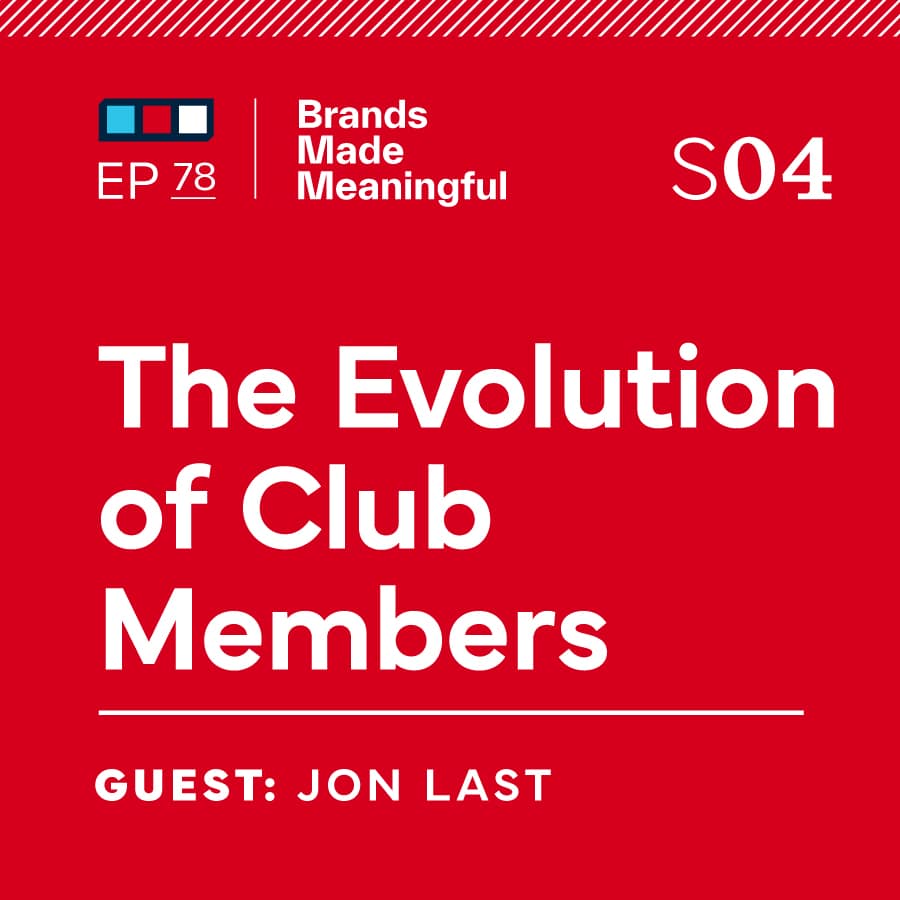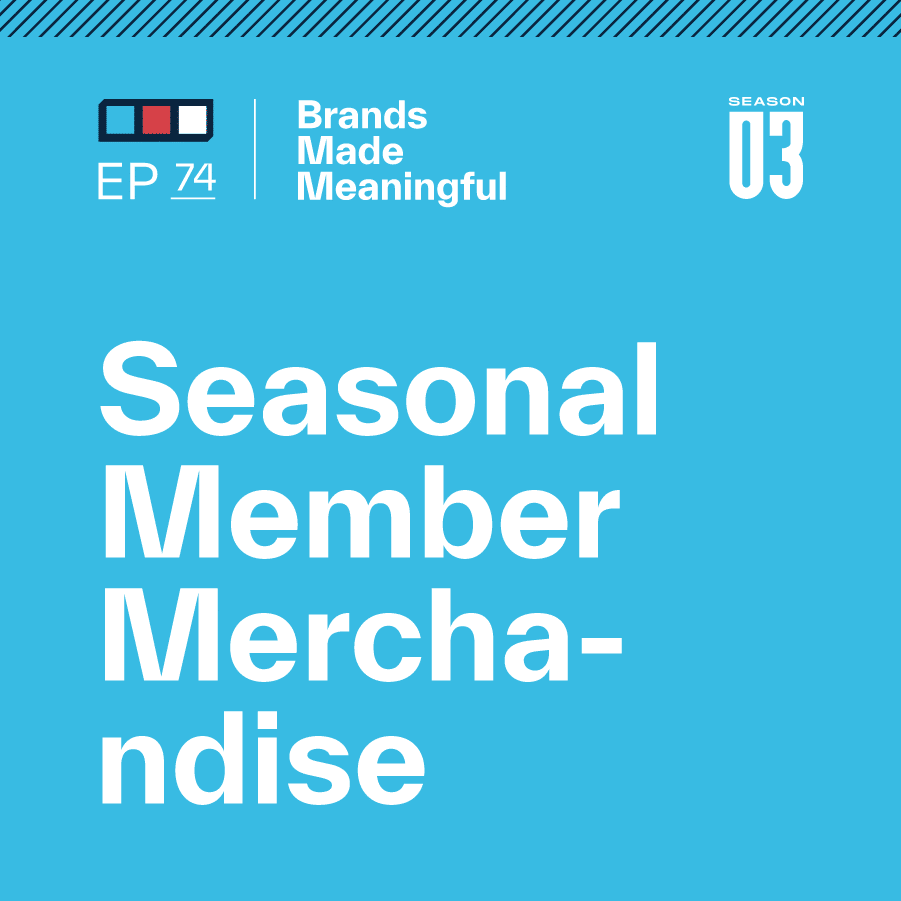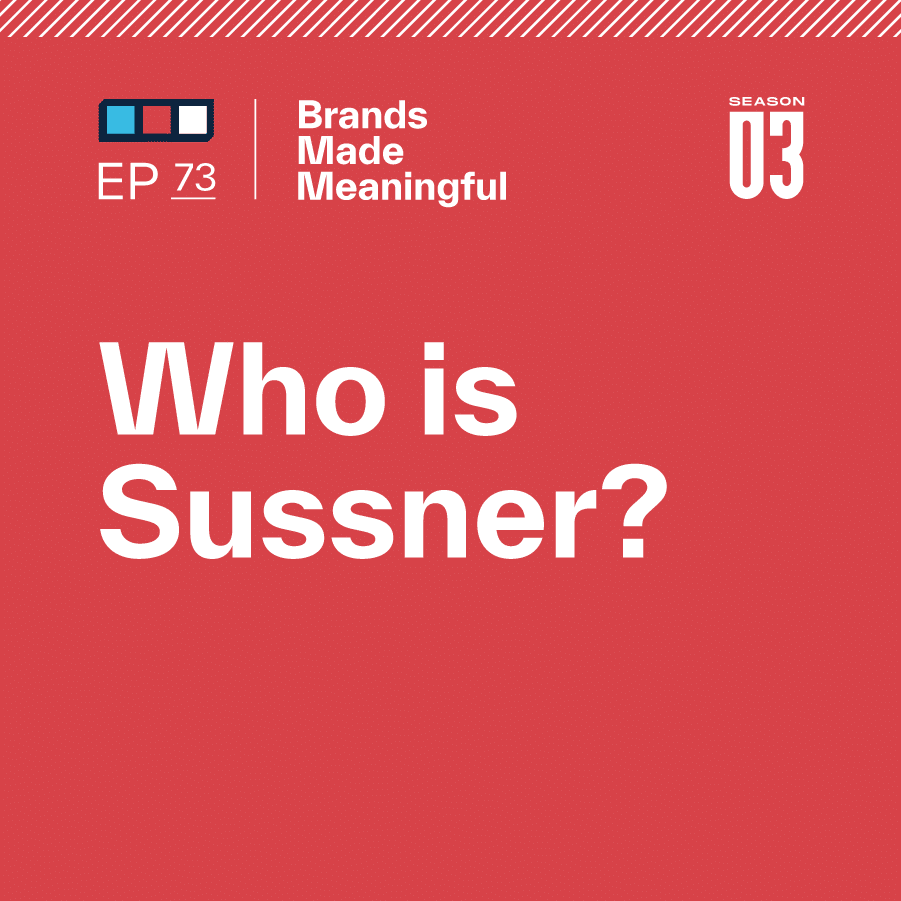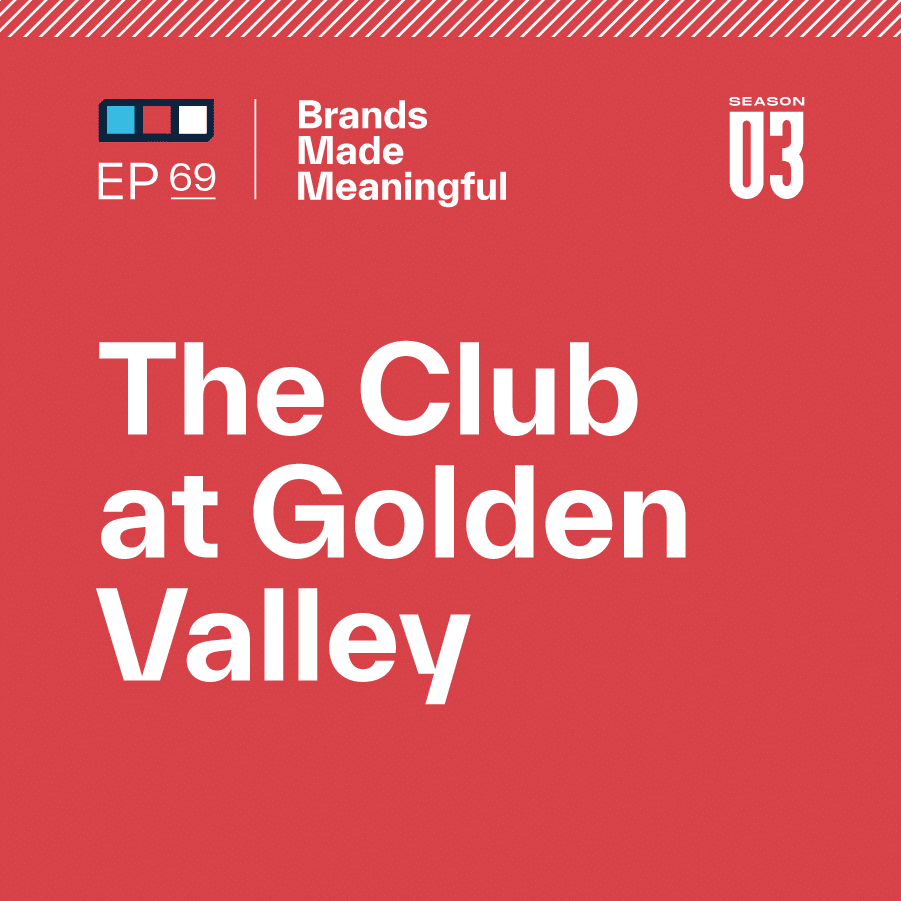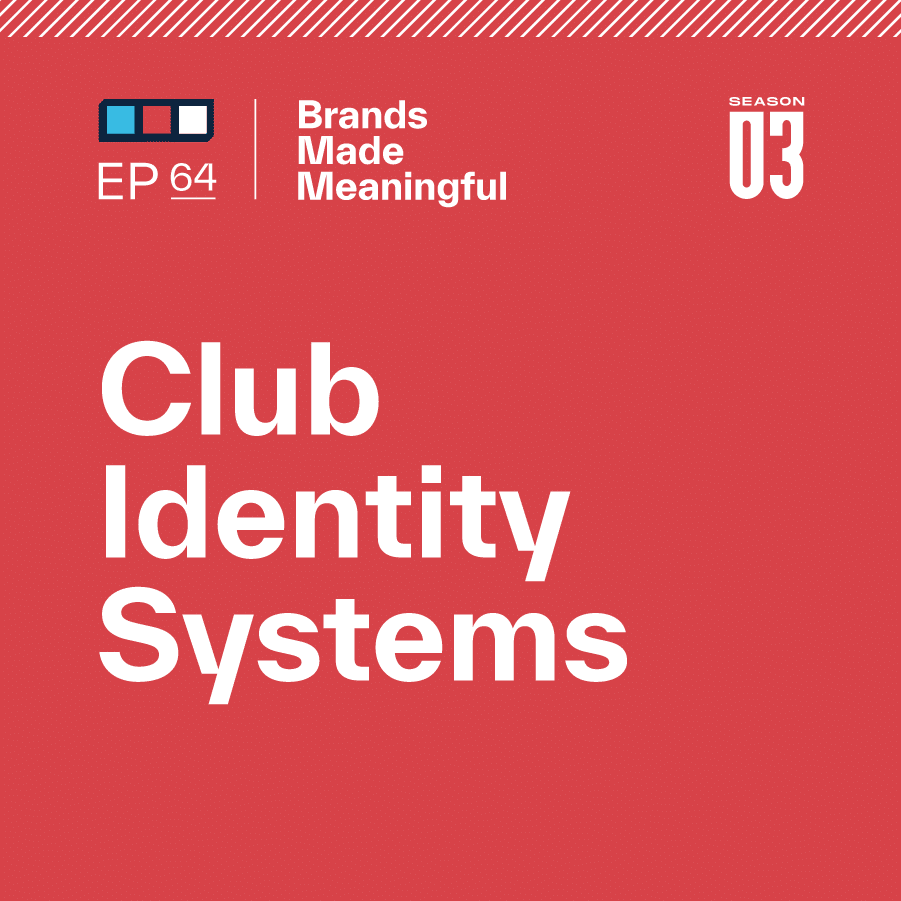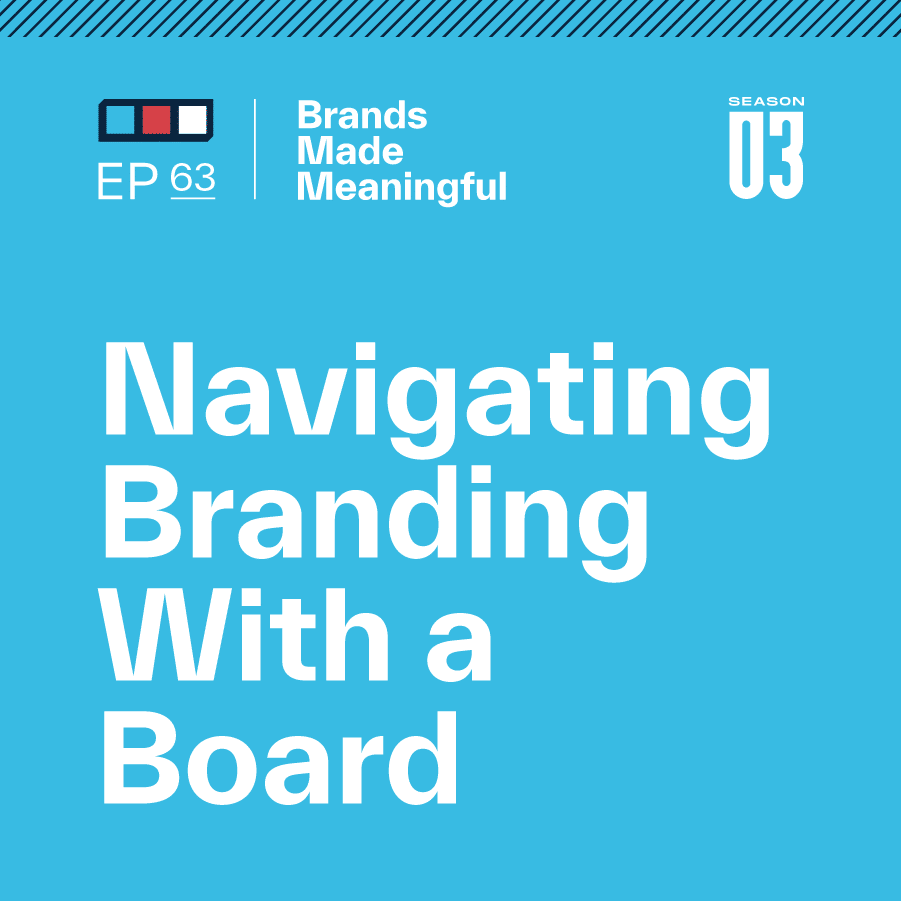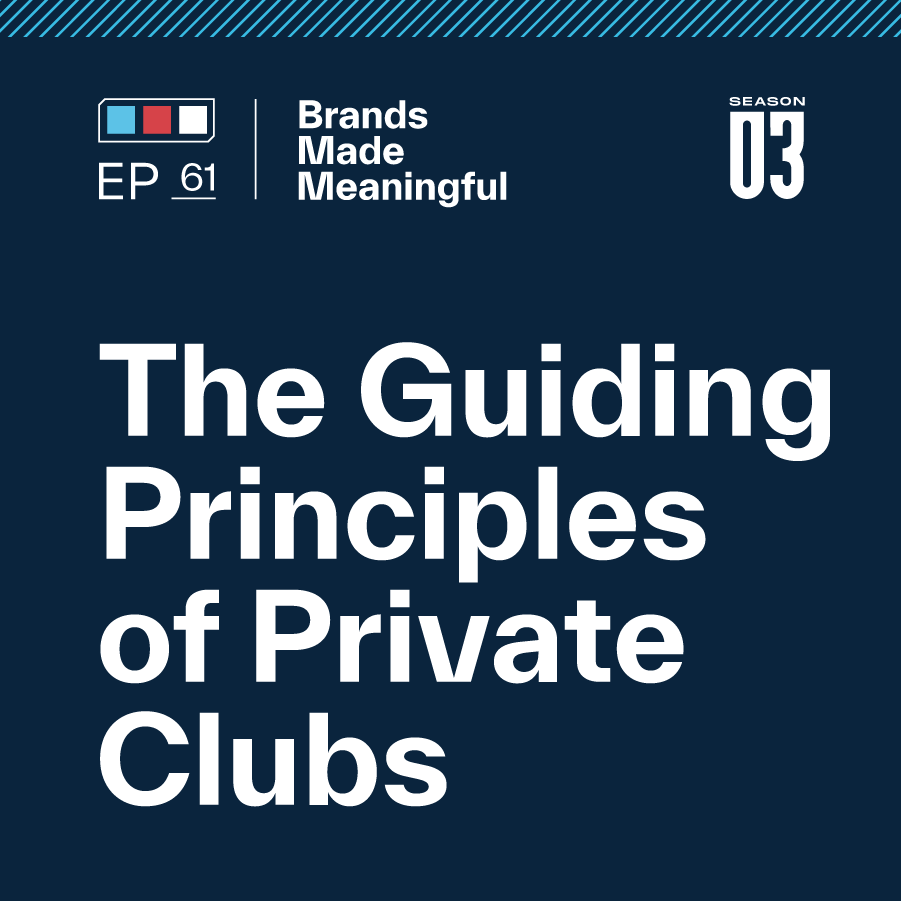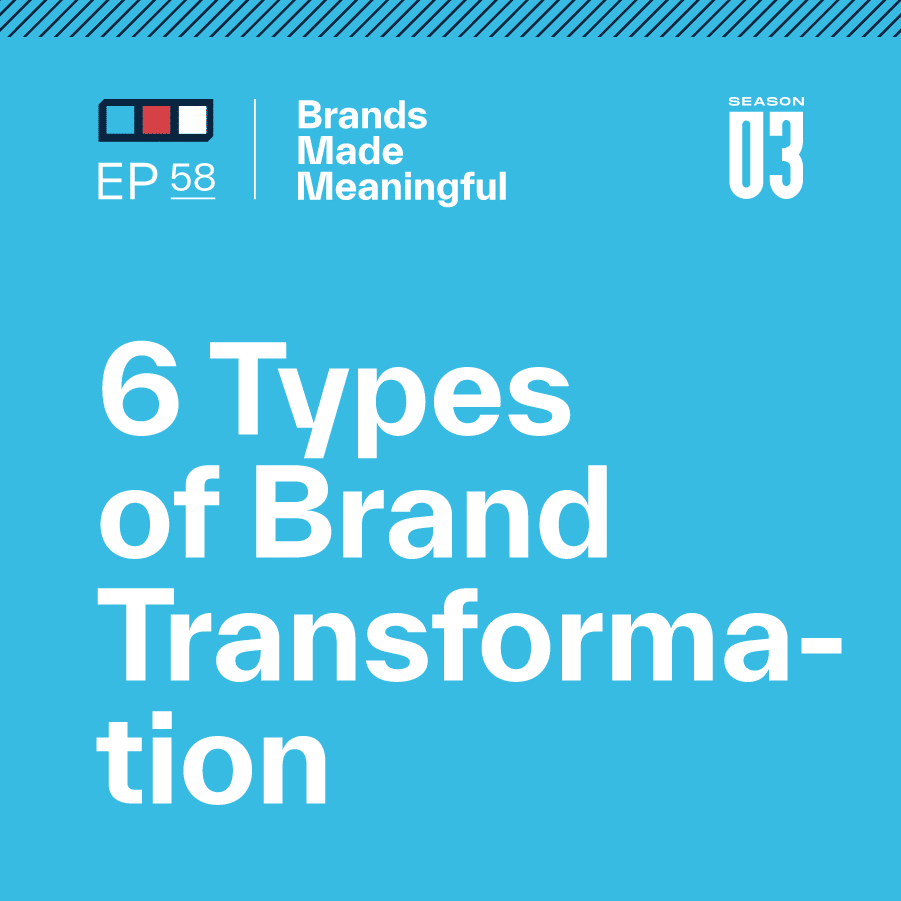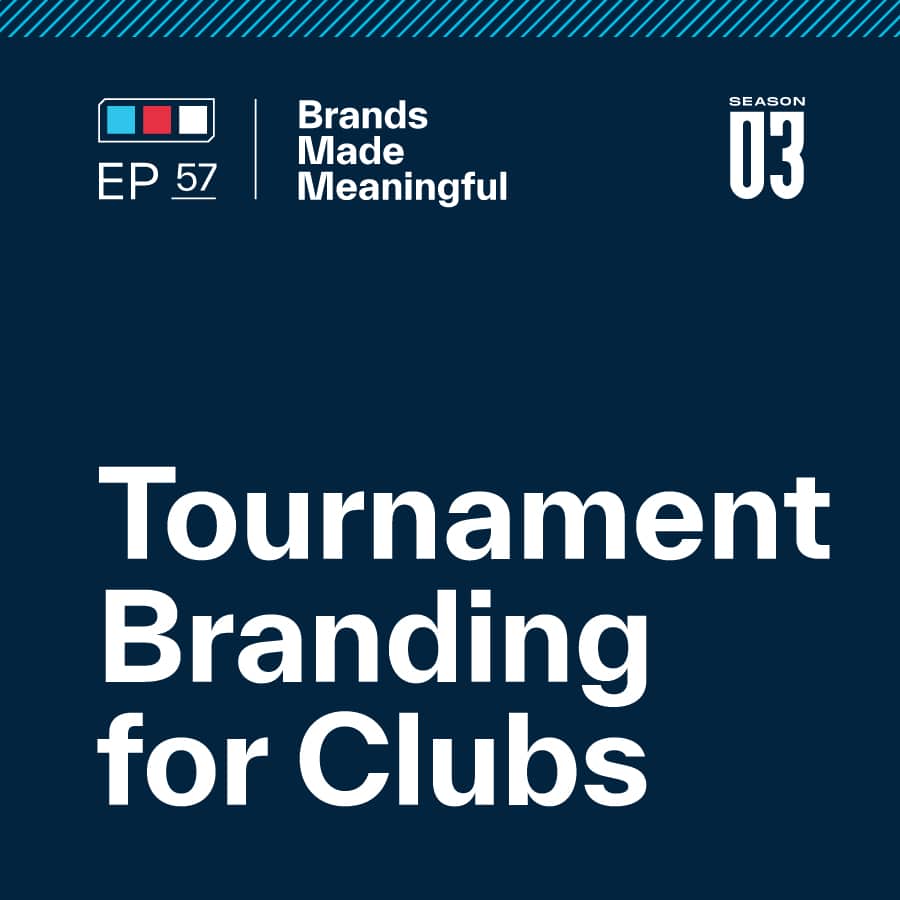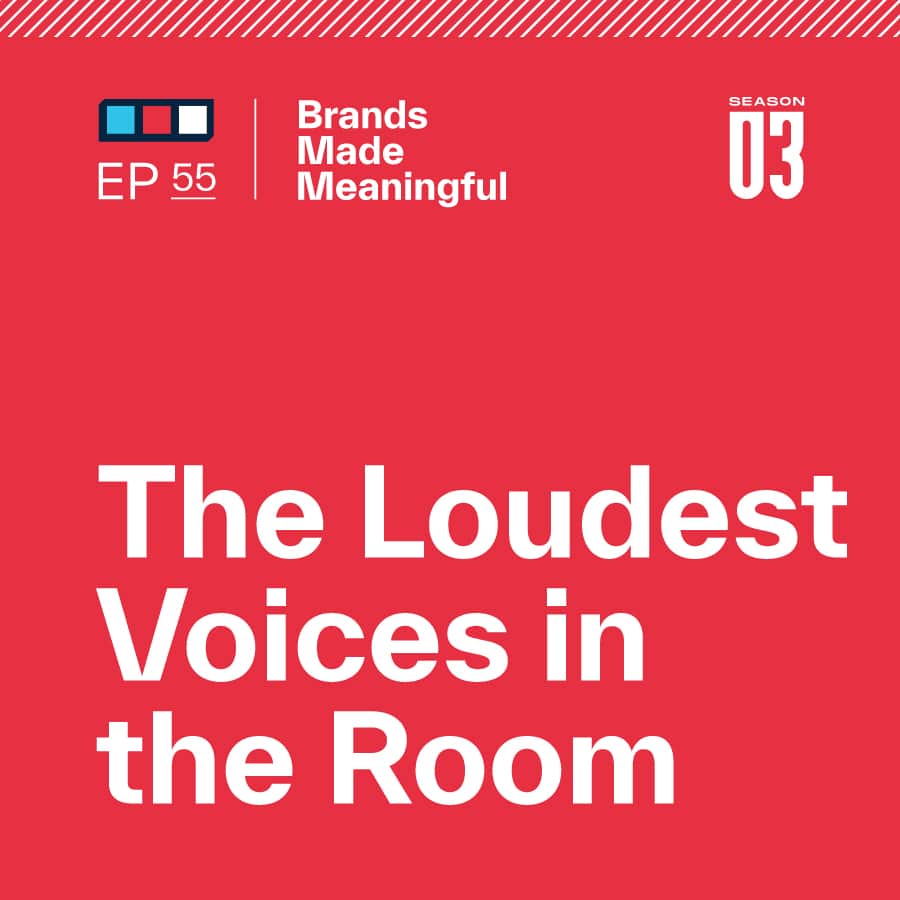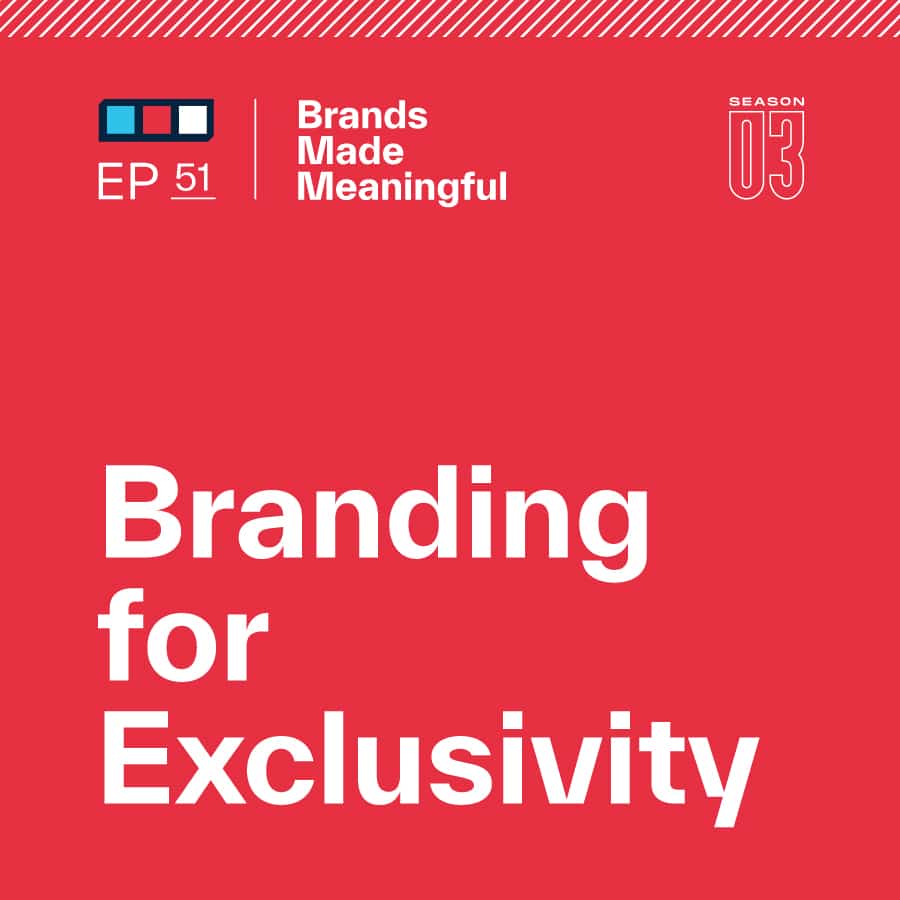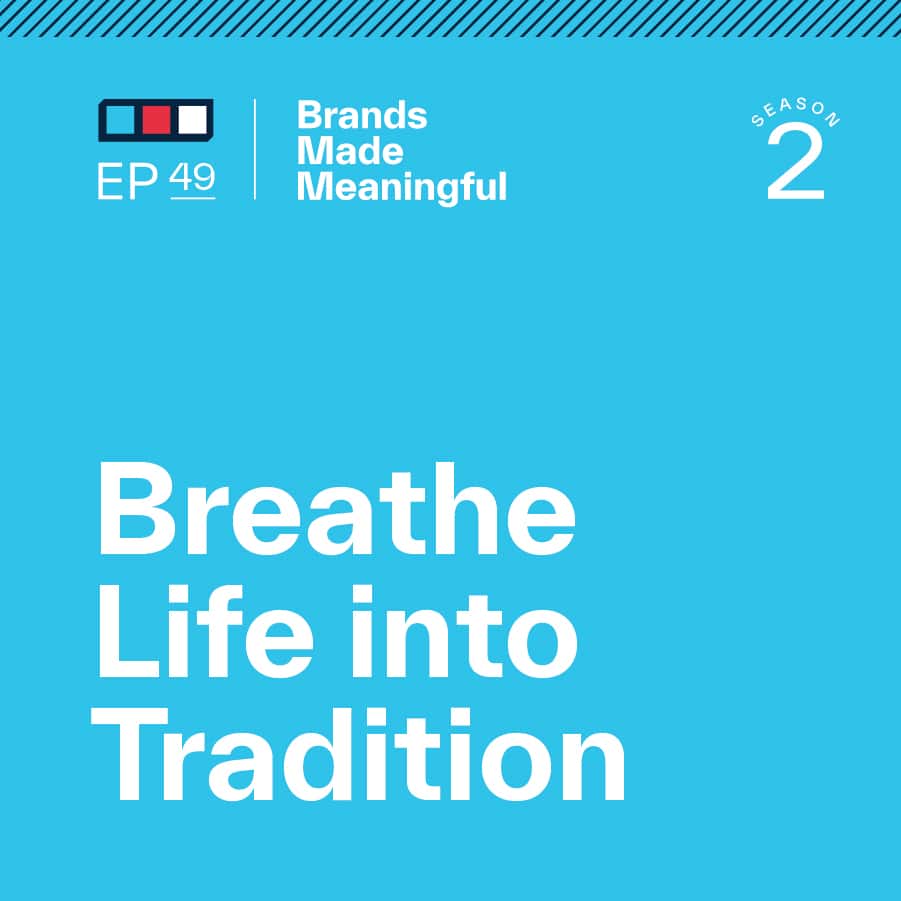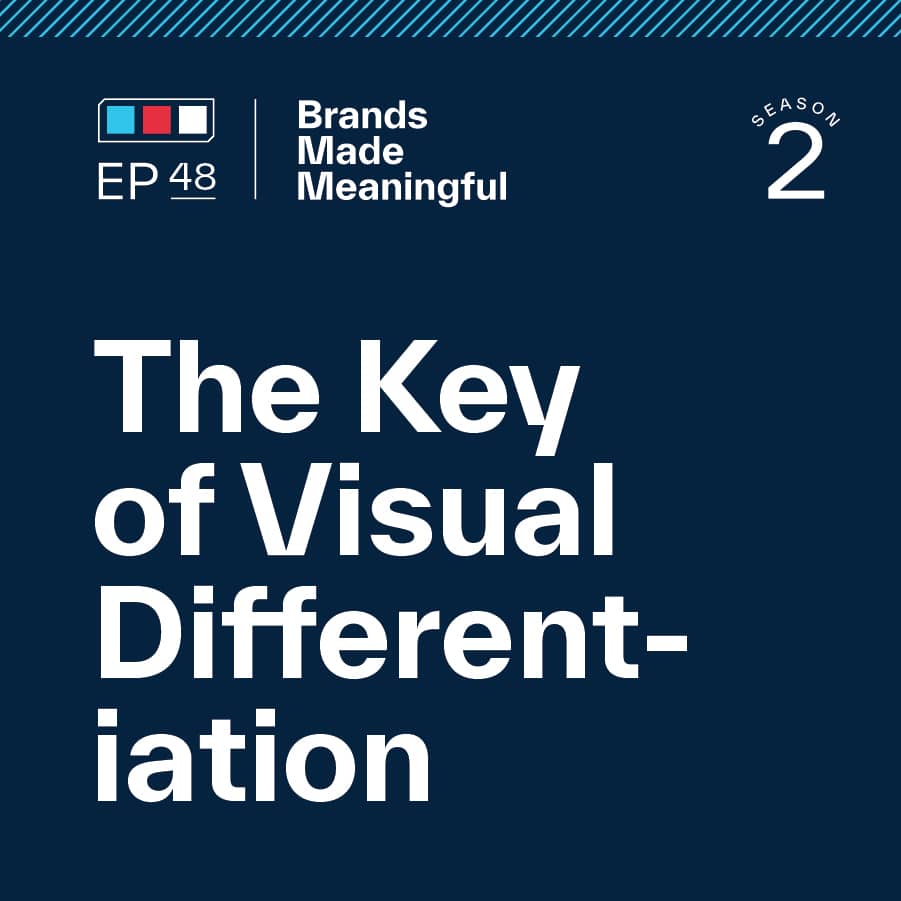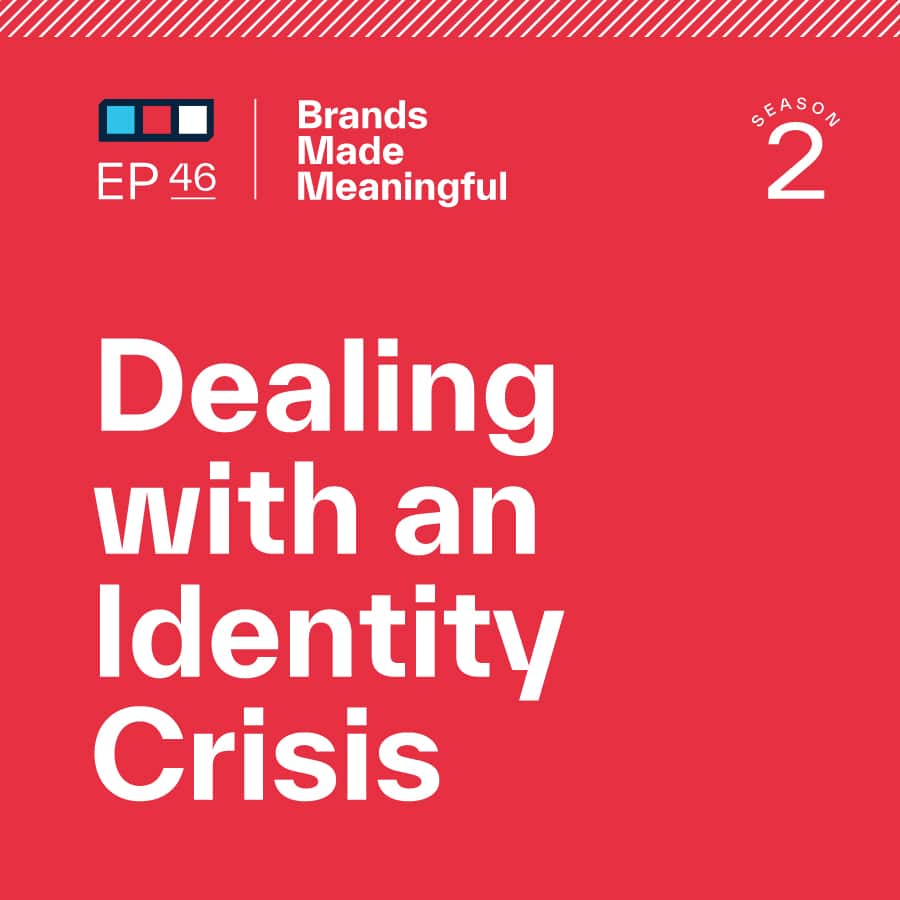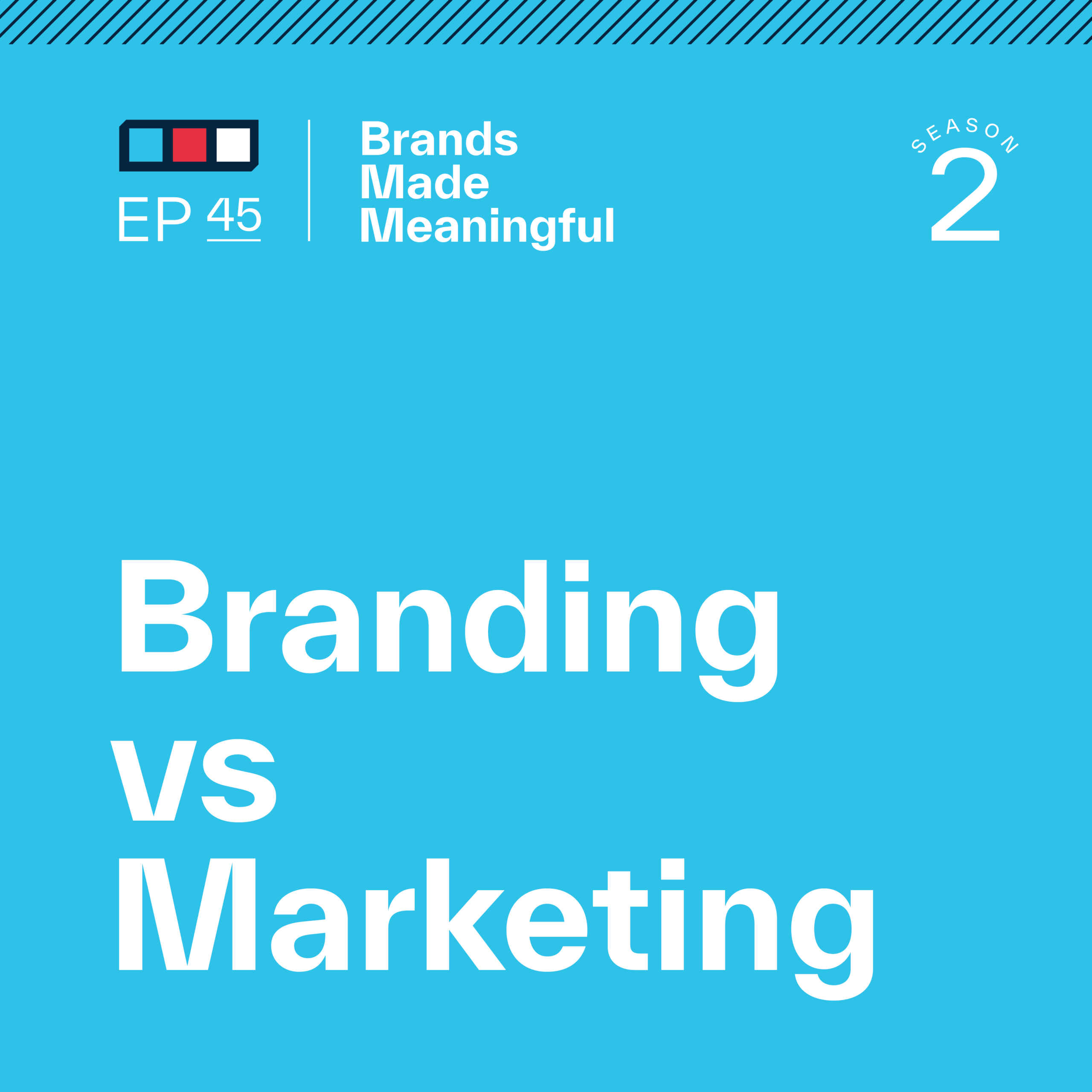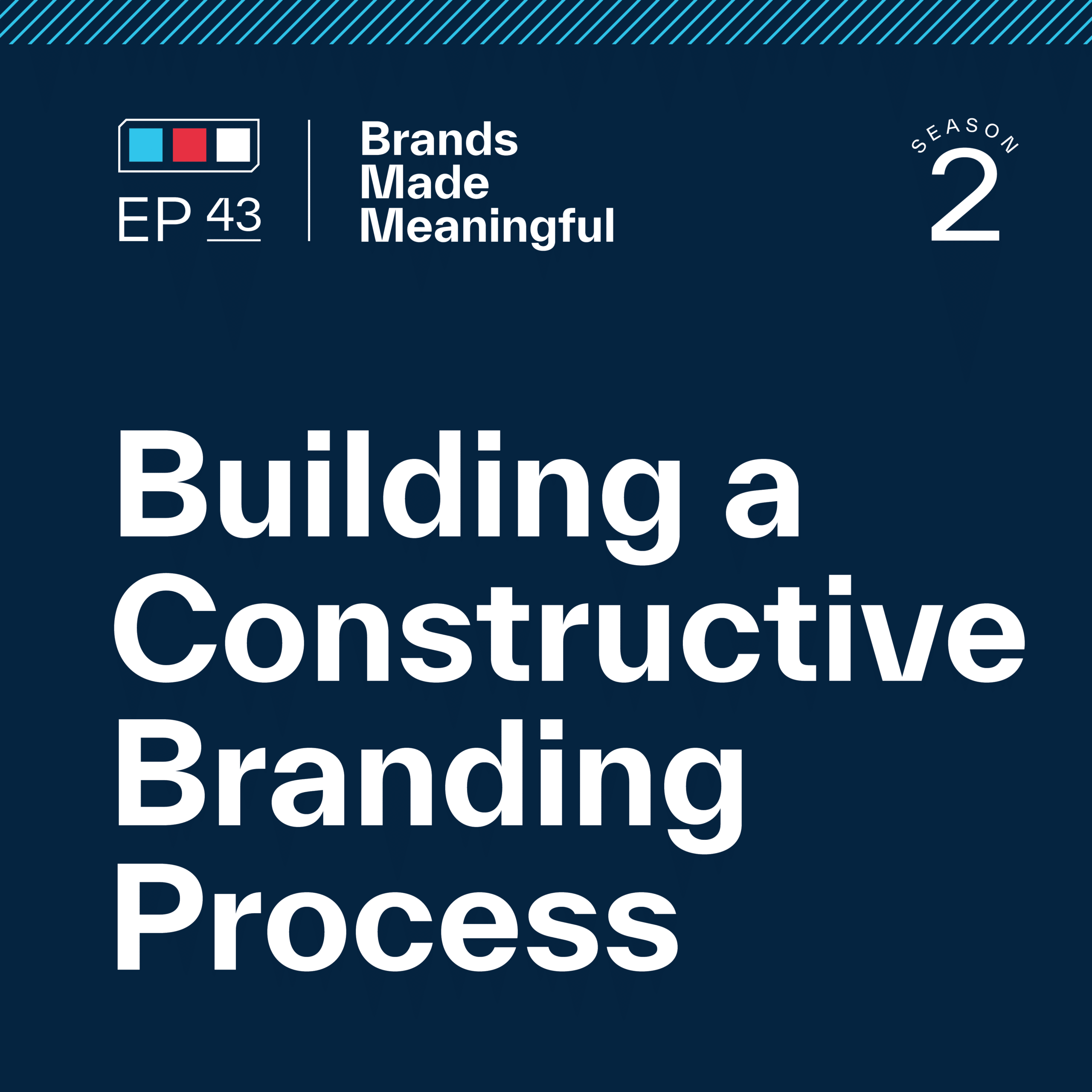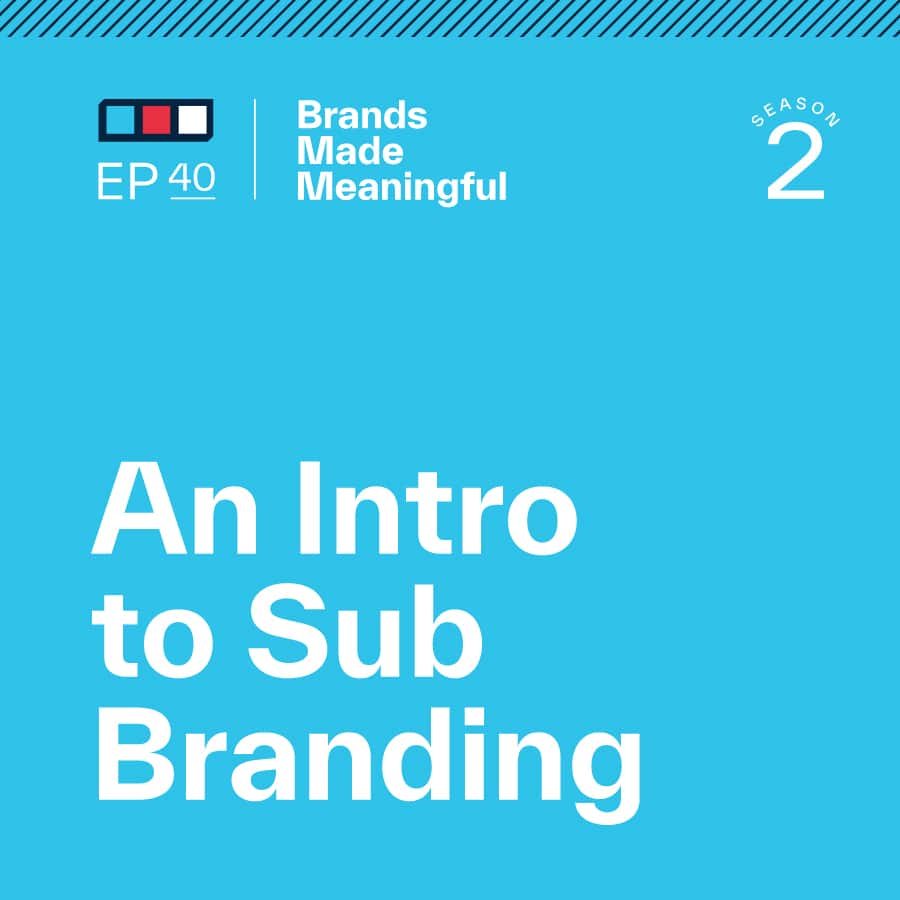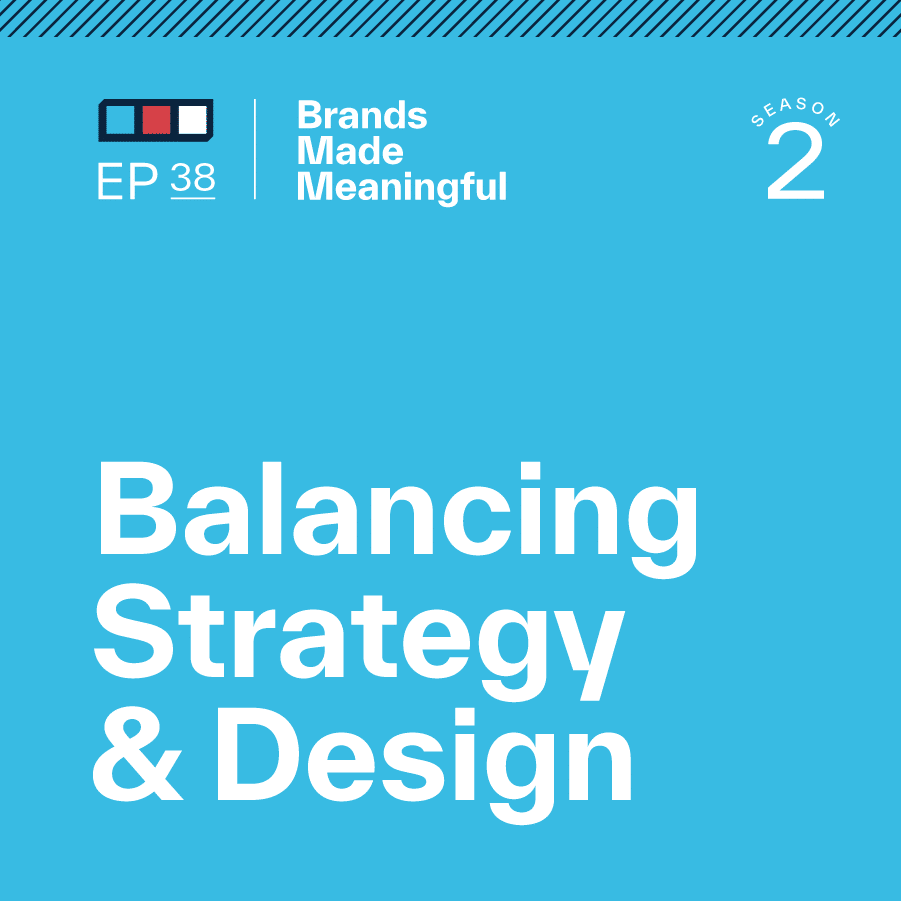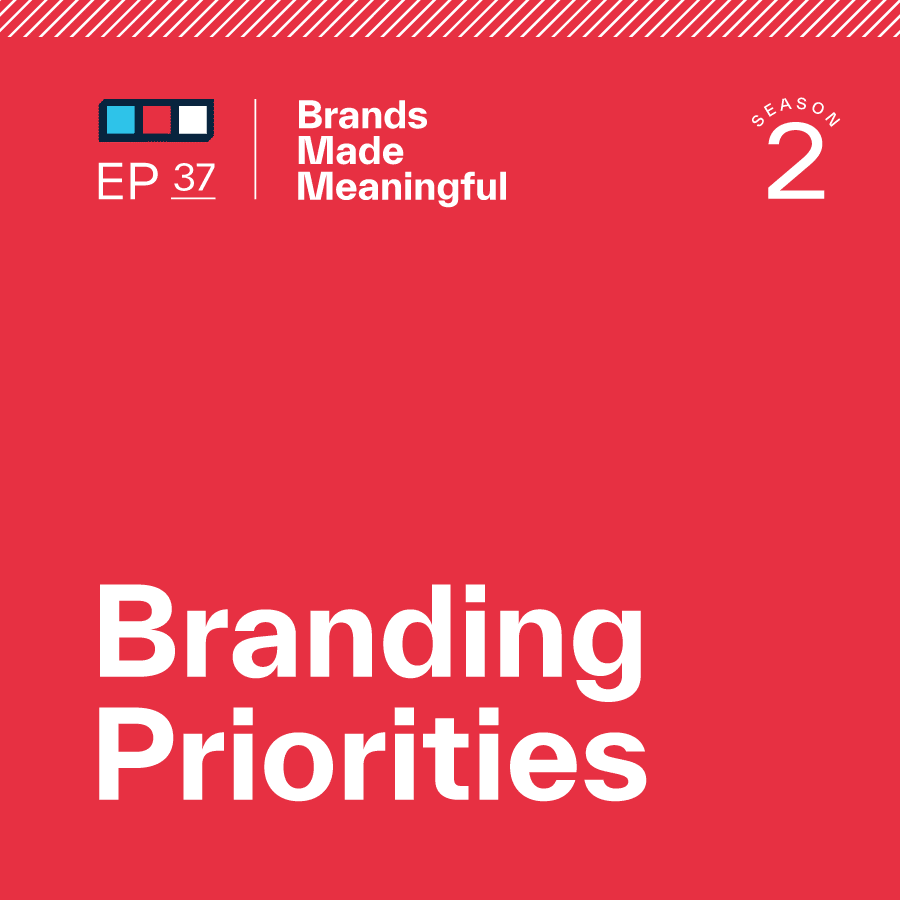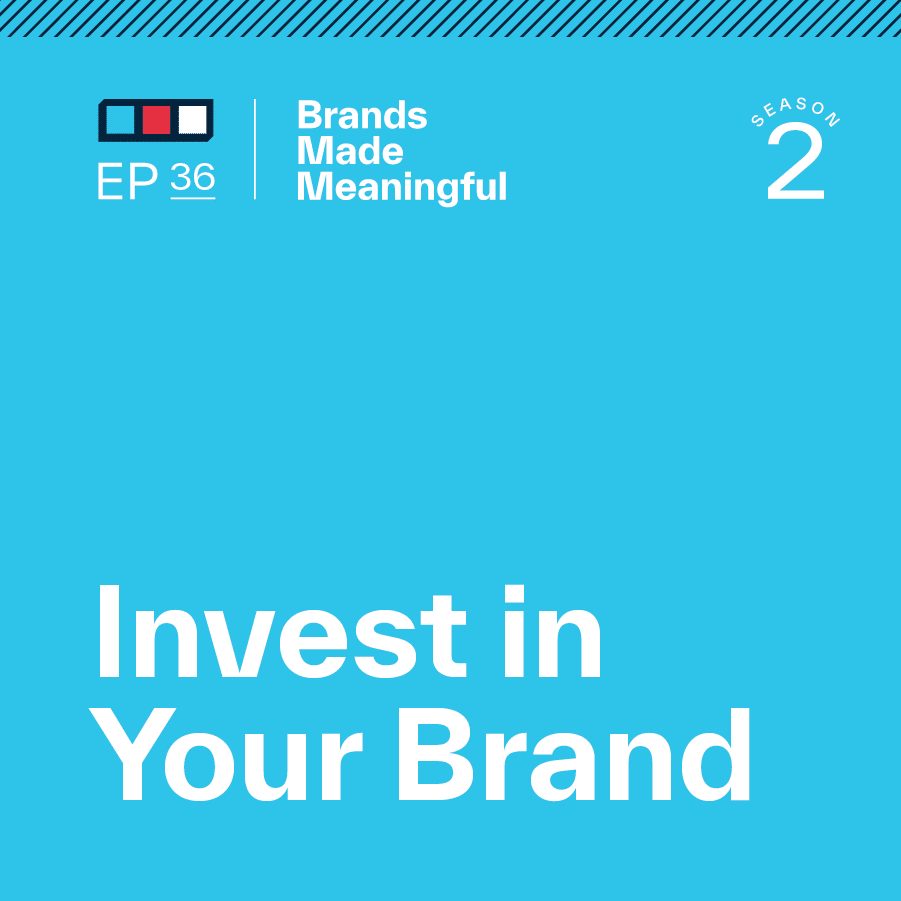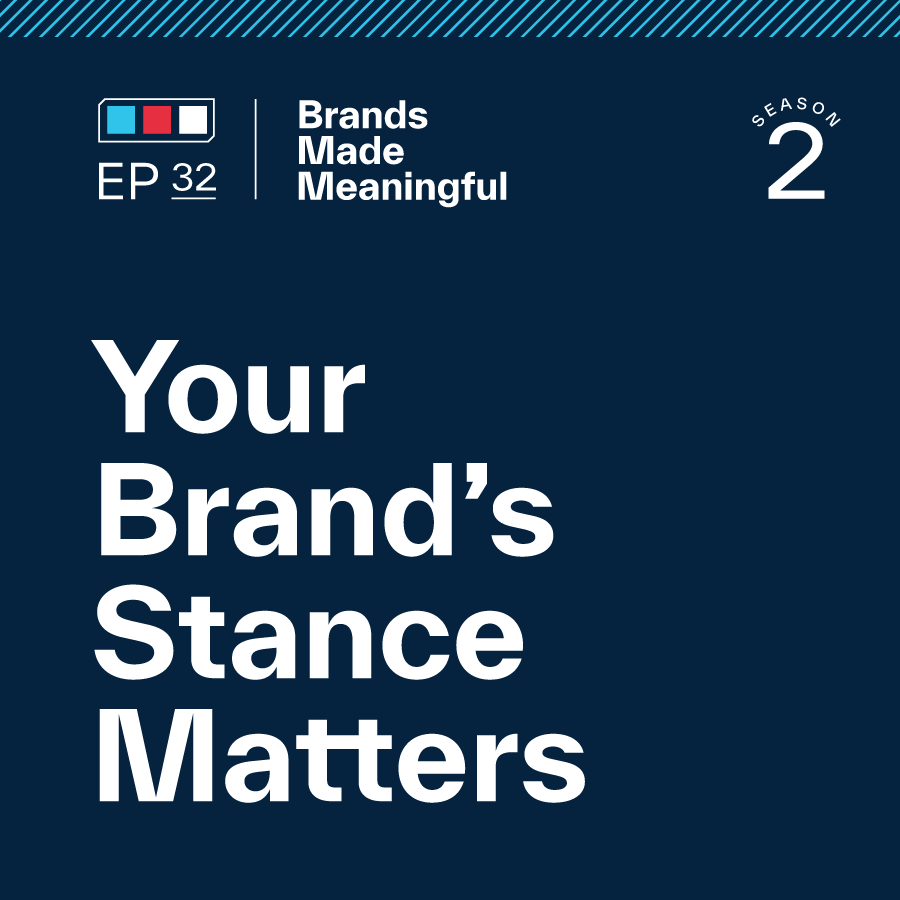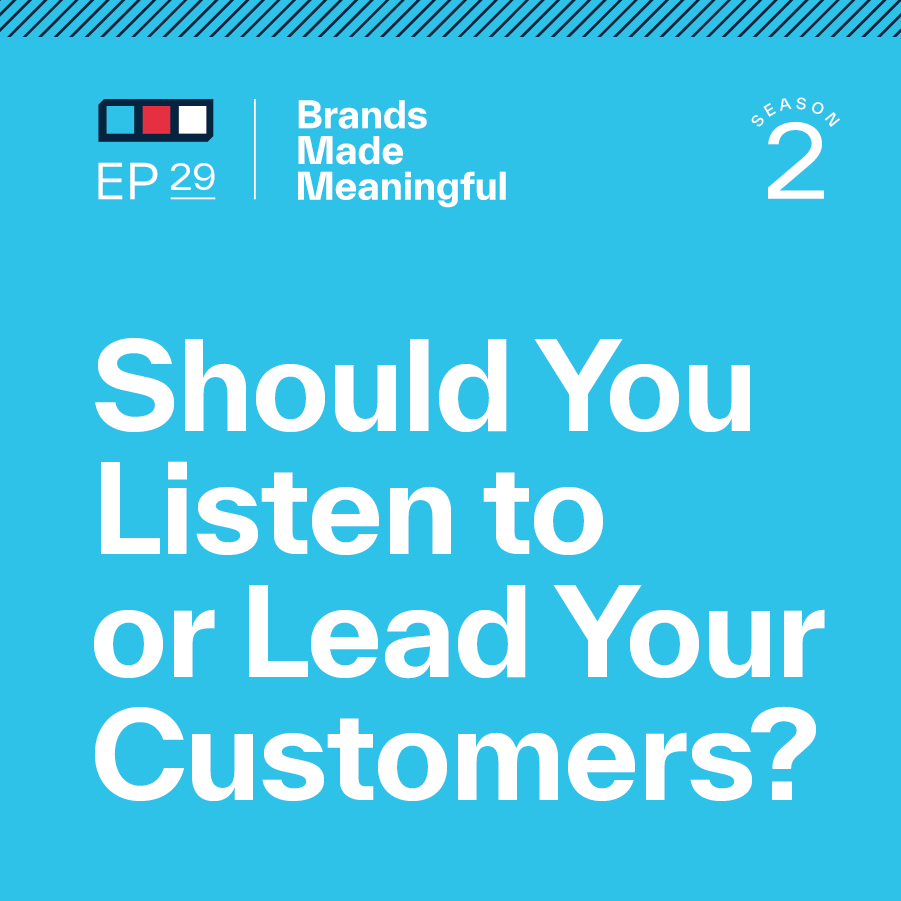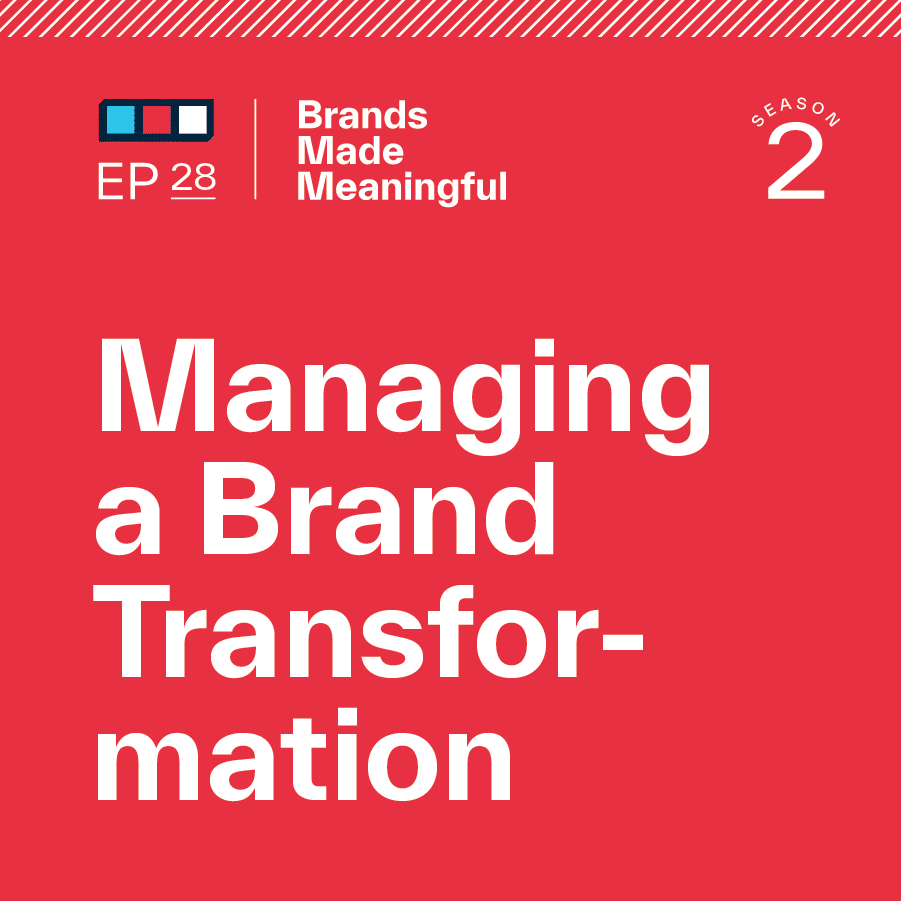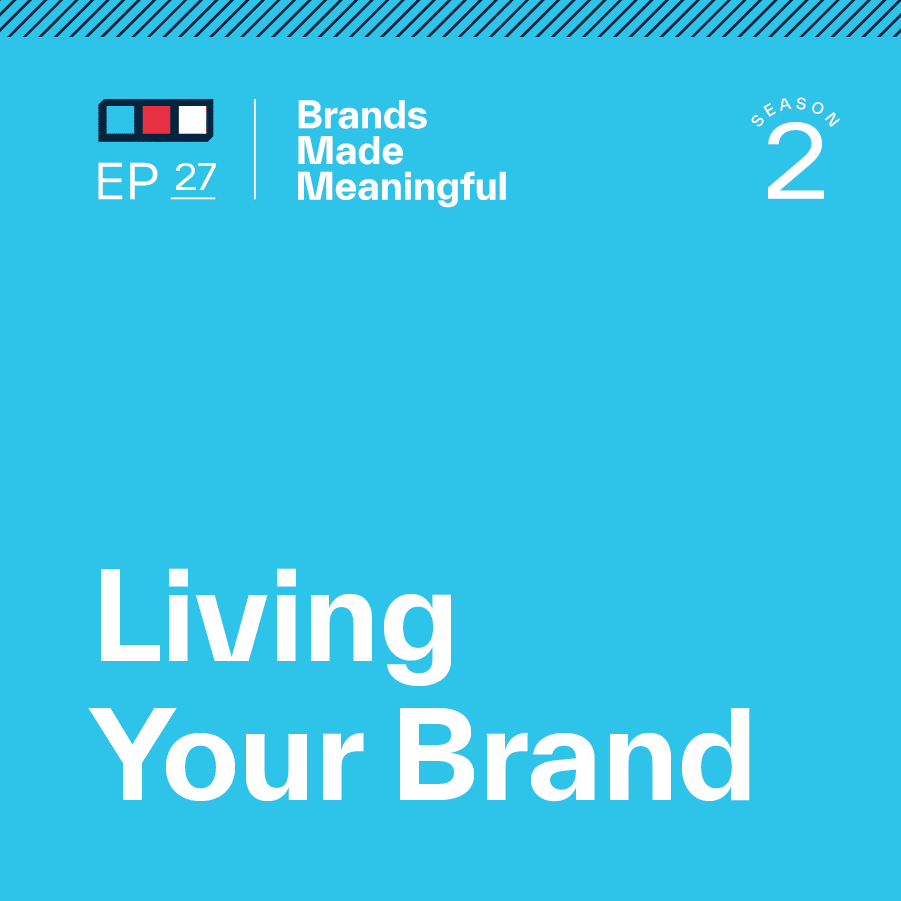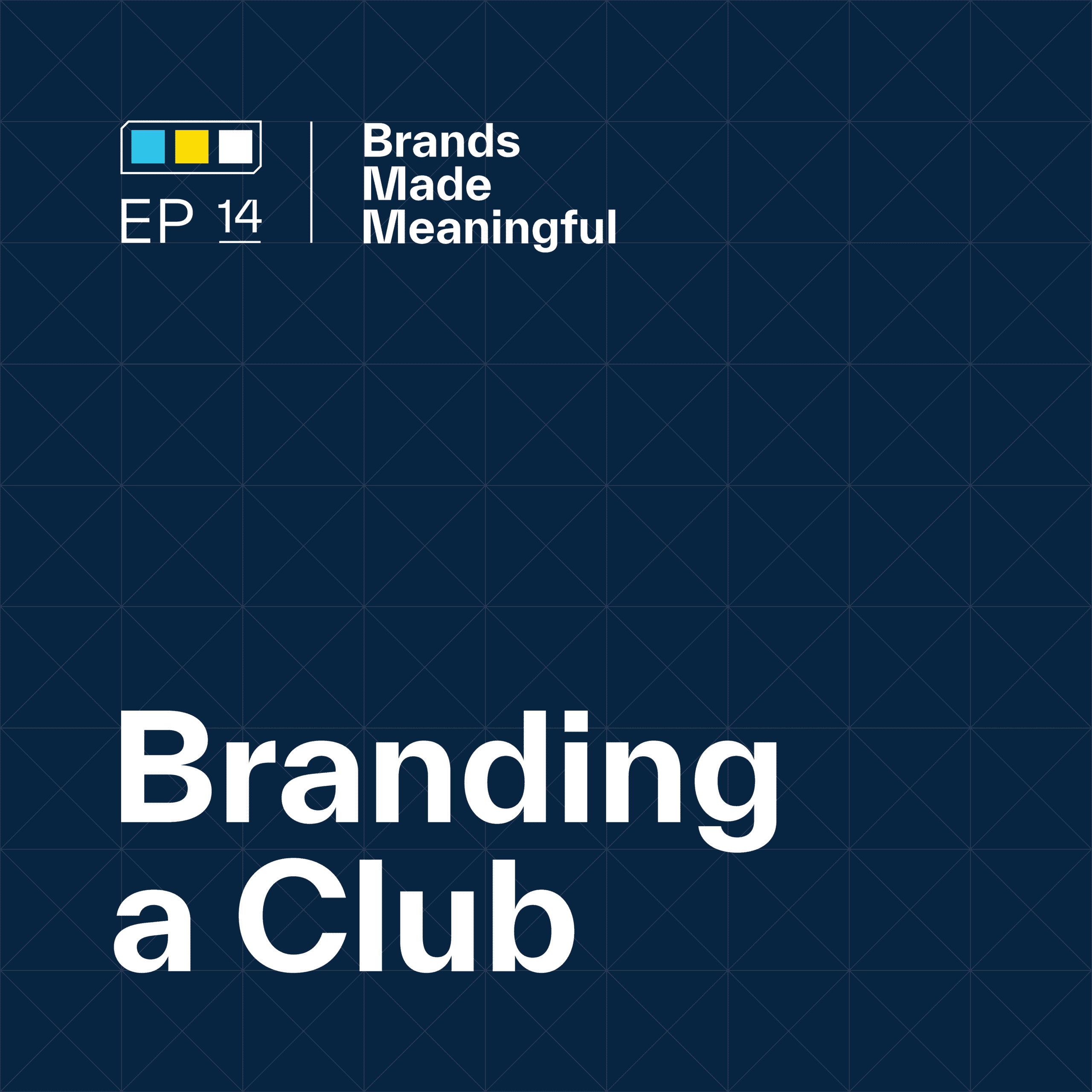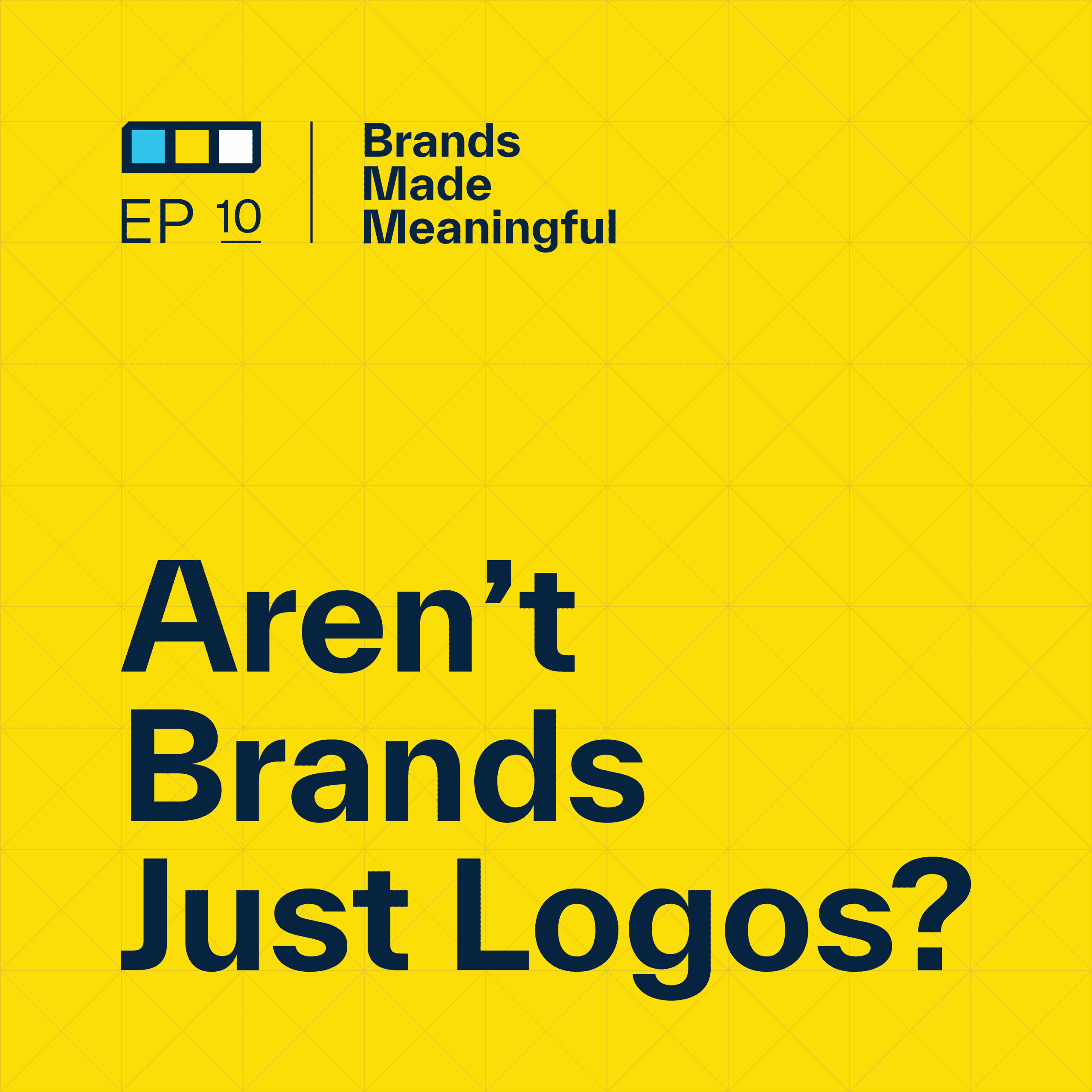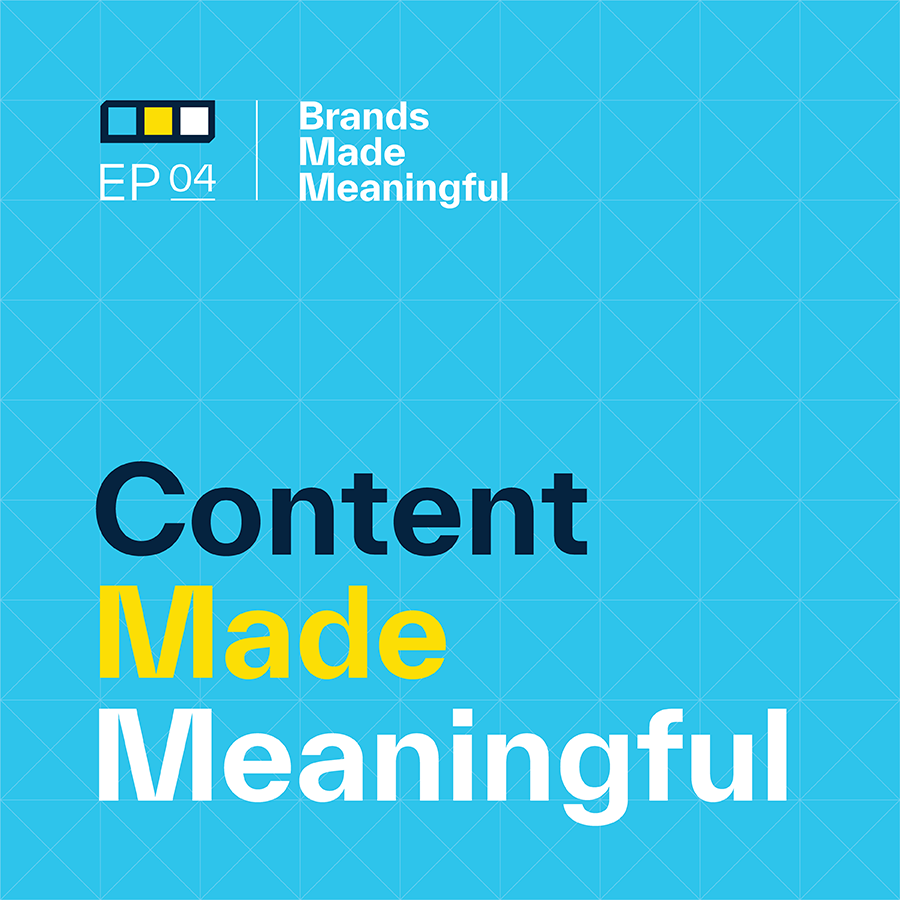EPISODE 70

Private Club Brand Systems
Episode 70
Derek and Tucker break down the building blocks of brand systems for long-lasting private club branding.
EPISODE TRANSCRIPTION
I want to talk about something that comes up a lot in our board meetings with clubs.
Tucker We talk about brand and all the components that go into brand. We talk a lot about flexible brand systems, and this sounds like a behind-the-scenes kind of conversation, but I think it’s really relevant for this because the modern way we look at how we build brands is not the same as how it used to be.
Expand Full Transcript
Derek Welcome to Brands Made Meaningful conversations with the team at Sussner about how purposeful branding inspires unity, identity, and powerful change for growth-minded organizations.
Tucker Derek, on today’s episode of Brands Made Meaningful, I want to talk about something that comes up a lot in our board meetings with clubs. We talk about brand and all the components that go into brand. We talk a lot about flexible brand systems, and this sounds like a behind-the-scenes kind of conversation, but I think it’s really relevant for this because the modern way we look at how we build brands is not the same as how it used to be.
Derek In the old days, a company or an organization would have one logo used maybe two ways. One would have been in color and the other would have been reversed out of that same color. I remember seeing a brand style guide for a Fortune 500 corporation that’s headquartered here in the Twin Cities, and this thing was inches thick on all the ways you could not use this one very specific logo. So it was an inflexible system which at that time made sense. This was like pre-digital media, pre-social. It was used in a different way at a different time. And those times, in our opinion, have changed.
Tucker When you say flexible or when we look at flexible systems, I think that a lot of people go, What do you mean systems? I’m going to nerd out a little bit on the definitions, but when we get into what is a brand asset system, that’s what we’re talking about. Like what is your primary logo? All of the lockups, which we call them, but they’ll be the variations of that logo. And then all of the graphics that hang underneath that which I would say all of the messaging. So taglines, headlines, and all those things as we come through that system and build it out for the future.
Derek Think of all of the ways and places your brand, your branding, and your logos live. They live on things like the medium’s website, for example. You might need a horizontal version of the logo for the header of the website. You probably need a square or round version of the logo for the Avatar on your Instagram page. You have logos that need to be legible when they’re large as signage, but you also have to have logos that will hold up when you embroider them on merchandise so that they don’t get so small that they don’t fall apart. So you think about being adaptable to all the different mediums and platforms, digital print, fabric, etc. The one-size-fits-all no longer makes sense. I’m thinking of a primary logo that we are designing for a club right now that has a lot of type words and a tagline underneath it. It has an established date. One of the merchandising people that we were talking to when she reviewed it, her first reaction was, Well, that’ll never hold up when I embroider that on the front of a shirt. And our reaction was, Well, of course not. That’s not the version that we would put on a shirt. That’s why there’s a system that we’re showing you so that that logo is as successful as possible on the shirt, for example.
Tucker The amount of information that we could put on something like the marquee sign out front versus what we can put on the sleeve of a shirt are very different things and they should be different things. They need to communicate different things, but they also need to establish the brand and all of those components. So we want the brand to be able to live in all these areas. That’s why you call it adaptable. We call it flexible, but there’s this level of being able to adapt to the area that it needs to fit into and to the communication style that it needs to do. But why this really matters goes into three buckets, I would say – why board members should care, why GMs should care, or why anyone should be paying attention to this. If you don’t have a flexible system, what that is holding you back from is really three things. And the first thing is strategic brand planning. When we go through this, a lot of clubs talk about how they have a strategic plan for their clubhouse, they have a strategic plan for their course, but they don’t necessarily have a strategic plan for their plan. Think about how our brand is going to move forward with the club and how we are going to utilize it as we keep growing and evolving and changing as an organization.
Derek You need a strategic plan for your plan – for how to plan your brand. And that’s where, and I’ll let you jump into this first one, but flexible, adaptable – the designer term that we use in our office is responsive. And that’s the theme that we’re going to be talking through over and over and over. But jump into the first one underneath the strategic planning portion.
Tucker So we talk about future-proofing a lot. It’s when we go into how we make sure this brand lasts decades rather than years. There’s a lot of people that go into this, and the first question we get from a lot of board members is, so we’re going to do advertising. That is not what we’re doing at all. When we talk about building out a new brand system, a new flexible system for your brand, this is meant to last a very long time. This is meant to be that piece that you can lean on because you say we’re going to try to build equity in this one mark. And that needs to be flexible across all these things. So that’s why we talk about that adaptability. It needs to be able to work on digital and print, and it needs to work on your business cards. It also needs to work on your website. It needs to work on the front side. It also needs to work on the sleeve of a member’s shirt. That is us thinking long-term about how we futureproof this and make sure that your brand is not something that just looks great today but also looks great ten years from now so that you can have confidence in that piece because this is a huge project for a lot of clubs. It would be a shame for it to just be a short-term endeavor.
Derek And if you do this, if you do approach your brand identity as a flexible system, I believe it will differentiate you from other clubs. It will help you stand out to prospective members who might be considering you versus somebody else. I’m thinking about a club that we’ve just recently in the last few months launched their updated brand and their brand system. Their previous brand was one logo. It was one crest, and that was all they had, and that was used on everything. So it was the old-school way of approaching how to implement your logo. It was one version and it didn’t hold up. When it was small, it was hard to embroider. It fell apart at certain sizes, but that’s the way that they approached it. And if you compare their brand now – it’s the Club of Golden Valley, which we just walked through their case study in our previous conversation. If you look at the depth of that comprehensive system, you can see for yourself the difference between having the room and the difference that having a flexible system will do for your club, and for your brand.
Tucker And you’re talking about a competitive advantage when it comes to the way that members see you. And I think that’s absolutely relevant. The biggest feedback is actually from employees to come back and say, I have something now. If I’m the communications director or I’m the membership director, I actually have tools now to use this in ways and then guidelines to show me how to do that. That’s a huge competitive advantage when you talk about resource allocation and moving that forward. So that leads me into the second bucket. If we move on from strategic brand planning, flexible brand systems are really about effective implementation. That’s a huge part of this to be able to make sure that you have the tools and everything at your disposal to implement it properly. So we go into what I was talking about before which is resource allocation, knowing the importance of all of these areas. You then don’t have to spend the time figuring it out. You can then go, Okay, so I can use this here and this here and this here. The merchandising team loves us when we come in because they don’t have to guess anymore. It’s to say, okay, cool, now I get to figure out what types of shirts and what materials and all of that stuff. I get to spend my time figuring out those really critical components because I don’t need to try to figure out how I’m going to make this badge that’s incredibly complex work on a really, really small stitched area. That’s not my challenge anymore and they love that.
Derek We actually just had this experience this week in presenting a brand system to our customer, to a client of ours. Somebody said, Well, what about this situation? They actually made a perfect recommendation of a version of the logo that needed to be added to the system to round out and address one specific way that they use their brand that we weren’t aware of.
Tucker This makes it easy from a board perspective or a GM’s perspective to look at this and say, I hired that person to make sure all of our communications are great, for example. We’re talking about a communications director. Their job isn’t to spend hours figuring out how to use the brand assets in their communications. Their job is to make sure the communications go out on time, are very professional, and communicate the things they need to communicate. If I’m a GM or I’m a board, I want that person focusing on that aspect of the job. I don’t want them distracted by the challenges of trying to figure out how to put this crazy, massive logo with all the detail in the world in it on the header of an email. That shouldn’t be their job. Their job needs to be focused on communication rather than placing the brand in all these different areas.
Derek Let’s talk about the third reason, the third way, that this really matters.
Tucker We’re going to get into member experience. I think everything in club comes back to member experience. That’s natural to say, How does this affect my members? How does this affect their experience on a day-to-day basis? And what this comes back to, if you don’t have a flexible brand system, let’s say you have one logo and it’s very, very structured. You don’t have a minimized version of it or any of that. What’s going to happen is it’s going to make members feel like the brand that they belong to, that the club, is a little out of date. But it also makes them feel like they’re not thinking about all the different ways. I think about when I walk into the club, to have this brand be flexible gives me this enhanced perception of my club to say, Wow, we look really professional. We look really great in our presentation. That’s this next level of brand experience that we can give for members because of this modern, adaptable way of looking at the system.
Derek You know, I think if a flexible system is done right, people won’t even notice the way that the brand is applied. In the places in which it lives will feel appropriate and natural and it’ll feel thoughtful like it was meant to be there. It’s when something shows up in a place where the proportions are off, or the legibility doesn’t work, or it feels like it’s not working right, that’s a sign of something that hasn’t been designed to be flexible. When we say flexible, and we talked about this in the previous conversation, we don’t mean to be overwhelming. We don’t mean to provide so many assets to the team at the club that this is a challenge to manage, but rather to put together just the right amount of pieces to cover all of the various situations in which this brand shows up. And like I said, I think if it’s done right, it’ll be seamless, it’ll be effortless, and people won’t notice. And that effortlessness, I think, will help that club come across as a little bit more contemporary, a little bit more future-minded, one that’s evolving versus just stamping that old crest over and over and over on everything.
Tucker Effortless is a great word to think about it. When we build out these brand systems, we want them to delight. We want them to stand out. But it should never be a hassle to represent your club. That should never be the case. If you are struggling with that representation piece to say you’re a member and you go, God, I’d really like to rep something for my club, but I can’t walk around with this logo that takes up almost my entire left chest because it’s just so big and gaudy that it just doesn’t work or I don’t even know what I’m looking at. That’s a problem. So what we try to do is make sure that it feels like it’s just naturally fitting into a system. It needs to naturally fit into its environment, and that’s physical and that’s digital. But it needs to look good. You call it the hat test. It needs to look good on merchandise for sure. It needs to look good on a hat. It needs to look natural. It also needs to look supernatural on signage. It needs to look natural on a website. It needs to look like it absolutely fits there because it was designed to fit there, but it needs to look as if it was just never a problem at all.
Derek Exactly. The hat test is a great one. A lot of clients that we talked to refer to the airport test. When they’re repping their club’s brand on the sleeve of the shirt that they’re wearing, and somebody else in the airport sees that and either says, Whoa, you’re a member somewhere. Tell me more about that. Or they recognize the brand and say, You’re a member of that club. Very cool. I have a friend there. Tell me more about that experience.
Tucker There’s this level of every member is different. Those in the club world who are on the management side know for a fact – that every member is different. There are pockets. A lot of memberships are the same, but the members inside those memberships have various opinions, various perspectives, and they have different preferences. So this flexible system will allow us to say some members love just the icon, nothing else. Maybe there’s a bird as a part of your logo. But maybe there are members who just love the bird and no words around it at all because they don’t want to rep all of the names and all of that stuff. They just want the symbol. They want to be simple. There are other members at that exact same club that might want that bird with the name of the club around it because they want people to know exactly where they come from and where they belong. And so what our job is, is to give those members the opportunity to represent their club the way that they want to represent it versus forcing them to only represent it all one way or another. So when we work with merchandising teams, we try to balance that out and say, If we have multiple logos here, let’s try to divide this up a little bit and make sure that we give members the opportunity to pick and choose the type of representation they want rather than forcing them into you get this logo, and that’s it. And you have to pick it for any of these pieces of apparel.
Derek That’s a perfect way to describe and explain adaptability, flexibility, and responsiveness that in the end, it’s for your members. Your organization’s customers are your members. And if you can not only delight them with the way that they experience your brand, but you can engage them by giving them a little bit of choice of how to represent your brand – I don’t even know how to finish my sentence – that would be the epitome of flexibility.
Tucker There’s this level of members and guests. We don’t talk about guests that much on this podcast, but guests come up a lot in our behind-the-scenes conversations. How do we get guests to like that? And if you’re a guest of a club and you’re with a member and you love the experience, you probably do want something with the name on it. You probably want something to say, Yeah, I’ve been there. It’s more of a landmark type of purchase rather than an everyday purchase for you. So that also gives that opportunity to say, How do we delight guests and how do we give them the options that maybe our members don’t want because they see it every day? They don’t want all of this stuff. Whereas guests probably do want all of that because they only see it once or maybe even twice.
Derek I think we’ll have a whole separate conversation on member-only logos versus member-guest internal-only facing brand applications versus external. When is it right for you to have a well, if you know what this means, you know, versus this is a souvenir of someplace I’ve been and I want to rock that on my sleeve? That is absolutely part of what we think about when we are creating these systems.
Tucker So the takeaway is by embracing that flexible system that we’ve been talking about, Ppivate clubs really can maintain long-term relevance using these assets across various mediums moving forward in the ways that say, we can put this on physical, we could put this on digital. It does a lot of those things. It also enhances member engagement. It allows you to offer members certain ways that they get representation and that’s huge. It’s easy stuff. I mean, when we talk about taking a logo, for example, and breaking it down into the most complex, to the most simple, that’s not a ton of work. What the work is, is just establishing those guidelines and making sure your team understands it. But from there, it makes it so much easier for them to do their jobs and to place it properly. And then the third thing that we talked about is effectively communicating identity. That’s going to be huge when we talk about this goes on signage or this goes on a website or this just goes on the inside of a shirt or things like that. The difference in identity is it doesn’t need to be in your face all the time, but it should be a part of all the pieces of your club. It should find its way into every corner of the club so that when you look across it, it feels natural, it feels seamless. It doesn’t feel like it’s in the way at any point.
Derek We’ll come back to this conversation in a future episode with some visuals and we’ll share exactly what we mean by a flexible brand identity system. We’ll show you what logos and branding and colors look like in a handful of different applications so you can see what that means. But in the meantime, consider this approach. If you are rebranding your club, if you are refreshing your identity, consider looking at this approach in a modern way because we believe it will strengthen your brand, it’ll elevate your brand’s perception, it will differentiate you from these other clubs, and it will help you allow consistency in how you present and communicate that brand. And I think it’s going to help attract new right-fit members ultimately, especially if that symbol and that brand represents your club, your culture, what you’re all about, and where you’re going.
Tucker Good conversation. Till next time.
Derek See you next time, guys. Sussner is a branding firm specializing in helping companies make a meaningful mark, guiding marketing leaders who are working to make their brand communicate better, stand out, and engage audiences to grow their business. For more on Sussner, visit Sussner.com.
More Episodes Like This
Reclaiming Reputation Through Brand RevitalizationEpisode 85
Derek and Tucker discuss the potential that a branding initiative can have to restore a club’s reputation.
Branding The Club with Don KovacovichEpisode 84
Don Kovacovich, GM of The Club at Golden Valley, joins Derek & Tucker to discuss the impact that rebranding has had on his club and the opportunity it presents for other clubs
Changing a Club’s Membership ModelEpisode 83
Derek and Tucker discuss key considerations and challenges when changing your club’s membership model.
Connecting a Club with its Story with Jackie CarpenterEpisode 82
Derek and Tucker are joined today by Jackie Carpenter, author of People First.
Branding a Club AnniversaryEpisode 81
Derek and Tucker discuss the unique opportunity presented by milestone and anniversary dates for private clubs.
Private Club Storytelling with Ricky L. Potts, Jr., CCMEpisode 80
Derek and Tucker have the pleasure to speak with Ricky L. Potts Jr. about how powerful storytelling can be for your club members.
Opportunity in Club Facility RenovationEpisode 79
Derek and Tucker discuss pivotal key moments in your legacy and how to transform your story through renovation.
The Evolution of Club Members with Jon LastEpisode 78
Derek and Tucker are joined by Jon Last from Sports & Leisure Research Group to discuss the evolution of club members.
Member Branding vs. Product BrandingEpisode 77
Derek and Tucker discuss the challenges their client's have moved through when approaching differing styles of branding.
The Role of a Private Club's LogoEpisode 76
Derek and Tucker take a look back on private club logos they've designed over the years and explain the strategic reasons behind their choices.
Club Brand GovernanceEpisode 75
Derek and Tucker divulge the steps to evolving your brand while retaining your core values.
Seasonal Member MerchandiseEpisode 74
Derek and Tucker take a look at crafting specific merch to celebrate landmarks and special times of the year.
Who is Sussner?Episode 73
Derek and Tucker take a break from talking shop to talk about who they are and what they stand for.
Club Identities Beyond AmenitiesEpisode 72
Derek and Tucker discuss what it takes to stand out in unique ways for your club.
Little Things Mean EverythingEpisode 71
Derek and Tucker take a look at the often missed and easy to overlook.
Build Flexible Brand SystemsEpisode 70
Derek and Tucker break down the building blocks for long lasting branding.
The Club at Golden ValleyEpisode 69
Derek and Tucker take a close look at one of their recent rebrands.
When to Launch a Club RebrandEpisode 68
Derek and Tucker break down how to find the perfect timing when launching a club rebrand.
Steps to Launching a Club RebrandEpisode 67
Derek and Tucker break down the steps to take and the reasons why you should consider a club rebranding.
Brand Marketing vs. Brand DesignEpisode 66
Derek and Tucker define the line between marketing and design and how they intersect to inform one another.
Building Brand GuidelinesEpisode 65
Derek and Tucker show us how to build infrastructure guidelines to unify your brand experience across the board.
Club Identity SystemsEpisode 64
Derek and Tucker cover what Identity Systems entail and how to discern between internal and external methodologies.
Navigating Branding With a BoardEpisode 63
Derek and Tucker bring clarity to uniting your company under one cohesive vision.
Putting a Committee TogetherEpisode 62
Derek and Tucker assemble your need-to-know facts when putting together your committee.
The Guiding Principles of Private ClubsEpisode 61
Derek and Tucker go over the top ways private clubs can find the balance between pleasing old members while attracting new ones, all while making moves towards the future.
How Color Affects PerceptionEpisode 60
Derek and Tucker cover how to best convey your business with color.
Brand EcosystemsEpisode 59
Derek and Tucker break down how to craft effortless experiences when considering your brand as a whole.
6 Types of Brand TransformationEpisode 58
Derek and Tucker dive into 6 distinct types of transformations for a wide range of brands.
Tournament Branding For ClubsEpisode 57
Derek and Tucker discuss designing and delighting your club members with tailored events.
Brand Promoters & DetractorsEpisode 56
Derek and Tucker discuss how high level promoters increase your NPS and how to turn the tides on your detractors.
The Loudest Voices in the RoomEpisode 55
Derek and Tucker talk about gathering feedback while prioritizing every voice.
Determining A Primary AudienceEpisode 54
Derek and Tucker discuss if and when you should be honing in on your audience vs. casting as wide a net as possible.
Branding For ExclusivityEpisode 53
Derek and Tucker discuss the intricate process of naming your brand.
Measuring Brand SuccessEpisode 52
Derek and Tucker discuss how we measure our success in branding and a few key KPIs that help us understand our impact.
Branding For ExclusivityEpisode 51
Derek and Tucker breakdown how brands can create the perception that they are exclusive and only for a certain type of consumer.
What Makes A Brand SurprisingEpisode 50
Derek and Tucker break down the Sussner formula that we believe leads to a surprising brand.
Breathe Life Into Brand TraditionEpisode 49
Derek and Tucker discuss the intricacies and common pitfalls of branding for Private Golf Clubs.
They Key of Visual DifferentiationEpisode 48
Derek and Tucker break down the importance of differentiating your brand on a visual level.
Branding For Private GolfEpisode 47
Derek and Tucker discuss the intricacies and common pitfalls of branding for Private Golf Clubs.
Dealing With An Identity CrisisEpisode 46
Derek and Tucker breakdown how to identify and remedy a brand's identity crisis throughout thoughtful and intentional brand management.
Branding vs MarketingEpisode 45
Derek and Tucker discuss the differences between Branding and Marketing and how to make the two compliment each other.
Build Your Brand's FoundationEpisode 44
A brand's foundation is a critical element in being successful in the long-term.
Building a Constructive Branding ProcessEpisode 43
Derek and Tucker break down the steps required to build the most constructive and meaningful branding process.
What Makes a Brand Relevant?Episode 42
Relevance is a key piece of a brand's identity for creating clarity and connection.
Your Right to WinEpisode 41
Derek and Tucker discuss the “Right to Win” and the odds of your brand's success within your target market.
An Intro to Sub BrandingEpisode 40
Derek and Tucker discuss the nuances of developing sub-branding and strategies.
Conquer Branding FearsEpisode 39
Derek and Tucker dive into how to overcome the fear of change and the nature of constant refinement of your brand.
Balancing Strategy & DesignEpisode 38
Great strategy is a necessary foundation for great design—and great design brings great strategy to life.
Branding PrioritiesEpisode 37
Branding priorities are the actions and initiatives that shape or enhance a brand's identity, perception, and market position.
Invest in Your BrandEpisode 36
Investing in your brand benefits your company as a competitor in the marketplace, builds trust with customers, increases perception of quality, and drives employee engagement.
Why is Positioning Scary?Episode 35
Narrowing the brand's position is really a strategic decision to focus the brand's offerings, messaging and target audience on a specific niche or segment within the market.
What Are Brand Consultants?Episode 34
Derek and Tucker discuss the importance of hiring expertise with a wider breadth of knowledge than just visuals.
Hire for Brand FitEpisode 33
Hiring people that fit your brand is key in order to maintain brand authenticity, positive culture, and consistent messaging.
Your Brand’s Stance MattersEpisode 32
Your stance can help define your brand from a core level and make branding, hiring, and marketing not only easier, but more meaningful.
Levels of Executing a Brand RefreshEpisode 31
If you have a brand strategy in place, how do you execute it?
The Role of Features & BenefitsEpisode 30
Derek and Tucker discuss the importance of features and benefits within the context of branding, selling, and marketing your products and services.
Should You Listen To or Lead Your Customers?Episode 29
Within the challenge of any rebrand is the challenge of managing customers' perception of change.
Managing a Brand TransformationEpisode 28
Episode 28 discusses the highlights and challenges of rolling out a new brand, both internally and externally.
Living Your BrandEpisode 27
Your brand is not this shiny trophy on the shelf. It is something that you are molding every single day.
What Makes a Brand Authentic?Episode 26
Season 2 starts off with a discussion about building authentic brand experiences, both internally and externally.
Reviewing your Competition's CreativeEpisode 25
Derek and Tucker discuss the process of reviewing your competitors' creative strategy to better position your brand within the market.
Interviewing your Audience for InsightsEpisode 24
This episode details the process and benefits of interviewing your audience as part of the branding process.
Assumption ReversalEpisode 23
Derek and Tucker discuss how we change our thoughts and get into a different mindset to refine and revise our branding.
Developing vs. Amplifying a BrandEpisode 22
Another way to say it is, development is building and crafting your brand story, and amplification is then telling it.
Refreshing a Sporting Goods BrandEpisode 21
This episode shares the steps behind Sussner’s work in refining the Shock Doctor brand.
Defining PerceptionEpisode 20
Derek and Tucker discuss the positive and negative impacts of brand perception.
What is a Brand?Episode 19
Derek and Tucker discuss what defines a brand and what makes them successful.
Branding Golf Courses vs Golf ClubsEpisode 18
Derek and Tucker further hone in on golf course design.
Refreshing a Golf CourseEpisode 17
Derek and Tucker discuss the bar for golf course design – and how to push past it.
Let’s Talk Taglines Episode 16
Derek and Tucker talk taglines in today's episode.
Refreshing an Athletic DepartmentEpisode 15
Derek and Tucker sit down today to discuss what logos mean within branding.
Branding a Club Episode 14
Derek and Tucker discuss how to brainstorm branding a club.
An Intro to Internal Branding Episode 13
Derek and Tucker discuss the power behind internal branding.
The Value of Stereotyping Episode 12
Derek and Tucker sit down today to discuss the meaning of stereotyping within the branding world.
We’re on a Mission Episode 11
This episode digs into the rallying cry for the greatness your team is going to accomplish.
Aren’t Brands Just Logos? Episode 10
Derek and Tucker sit down today to discuss what logos mean within branding.
The Business You Are Really In Episode 09
Derek and Tucker sit down today to discuss how to discover what business you are really in to better understand your mission statement.
Clarity of Vision Episode 08
Derek and Tucker discuss the importance of looking ahead towards the big picture to better hone the purpose behind what we do in the now.
Branding B-2-B Environments Episode 07
Derek and Tucker discuss the Branding of Spaces.
It’s All in the Name Episode 06
Derek and Tucker discuss what a name can say - and not - about your company.
Delving Into Branding Data Episode 05
Derek and Tucker jump into the discovery phase of branding before it hits the drawing board.
Content Made Meaningful Episode 04
Today Derek and Tucker discuss the concepts within content and its common misconceptions such as the phrase "Content is King."
Brand Story vs. Brand Messaging Episode 03
Your story matters.
Visuals That Take The Cake Episode 02
Derek and Tucker sit down to discuss visual impact and what that could mean for your brand.
Are You Different or Distinct? Episode 01
It's not about being the only option, it's about being the right option. Join Derek and Tucker as they discuss Differentiation & Distinction.



